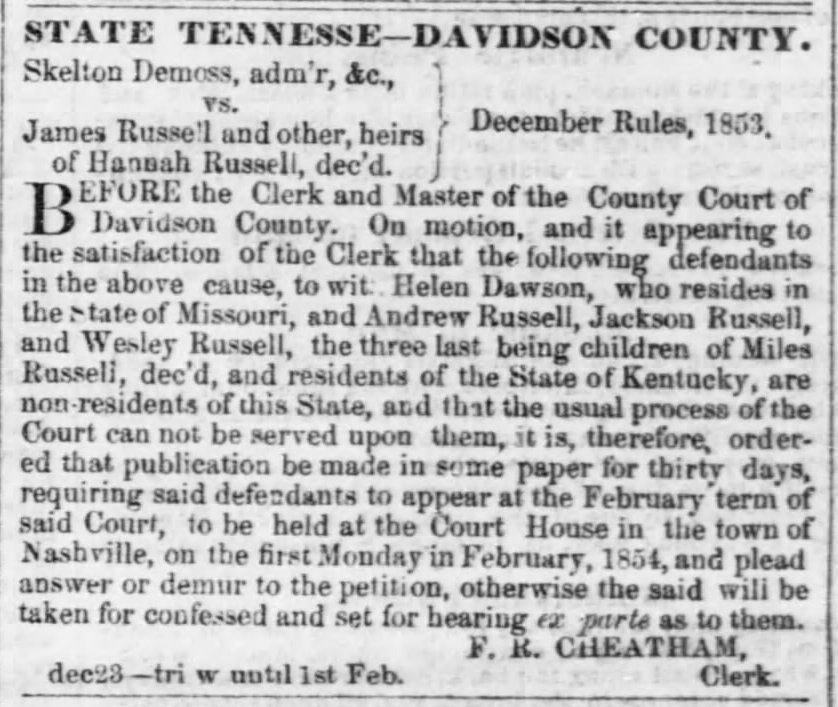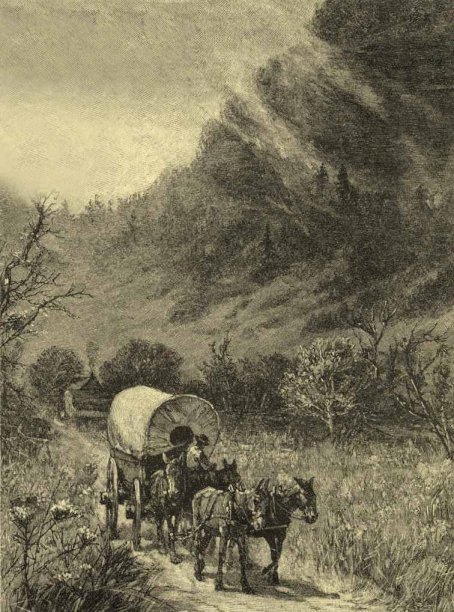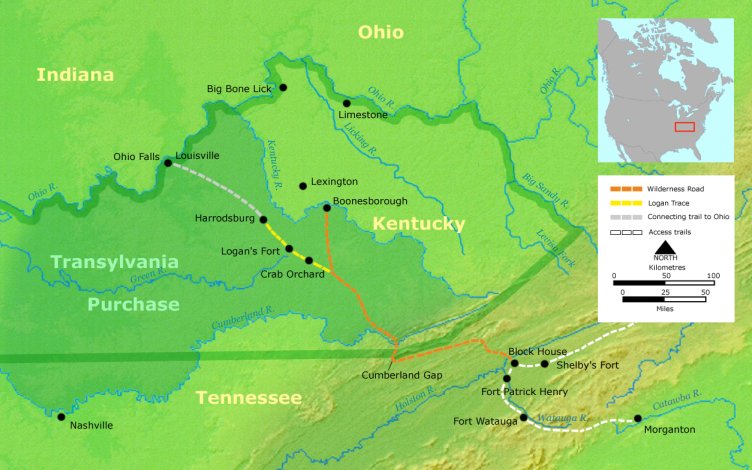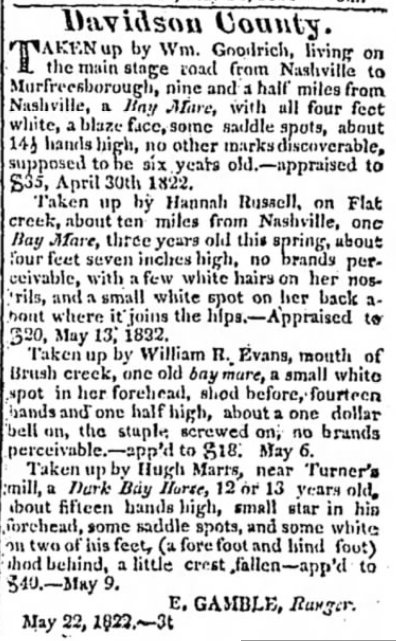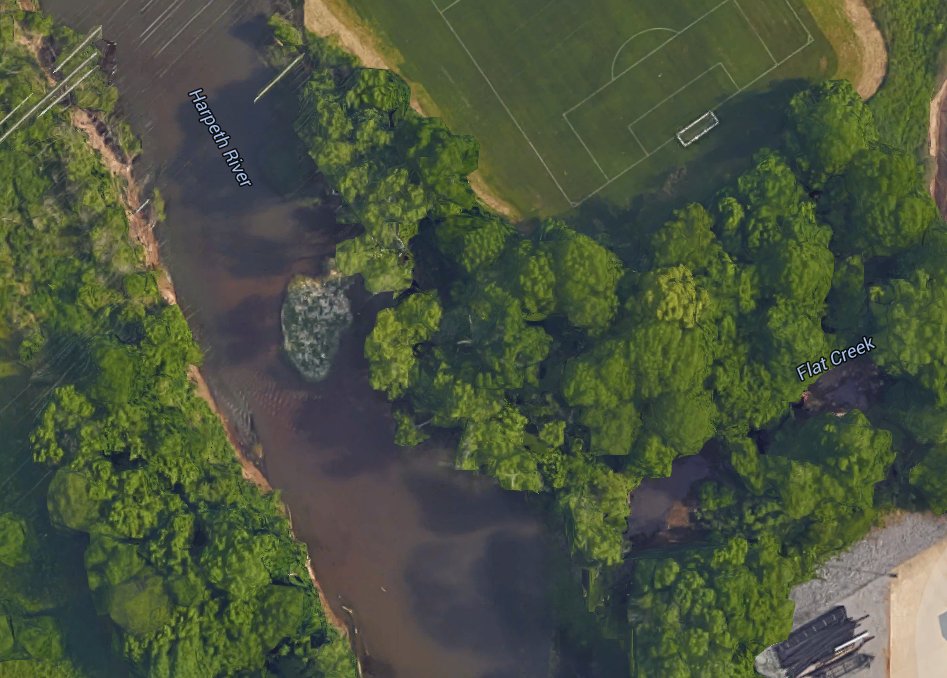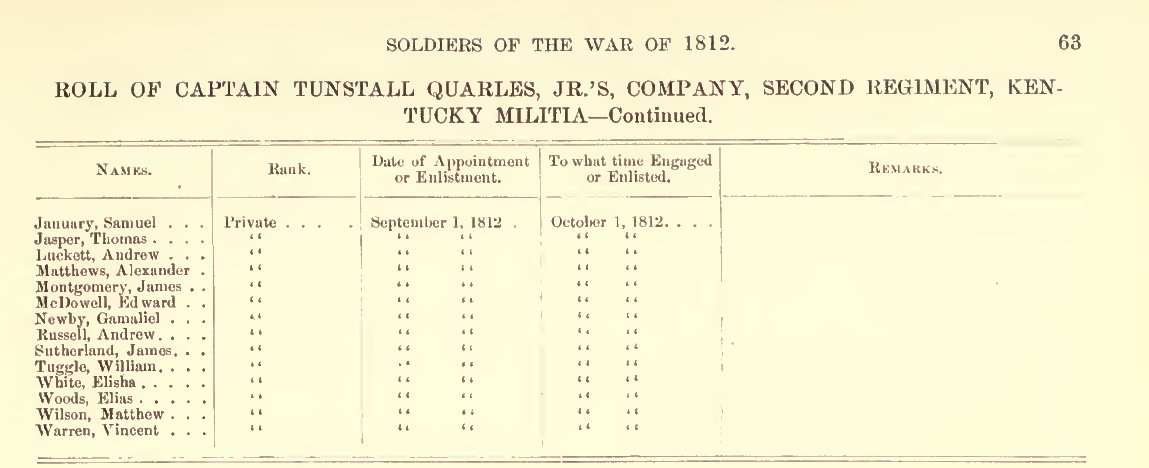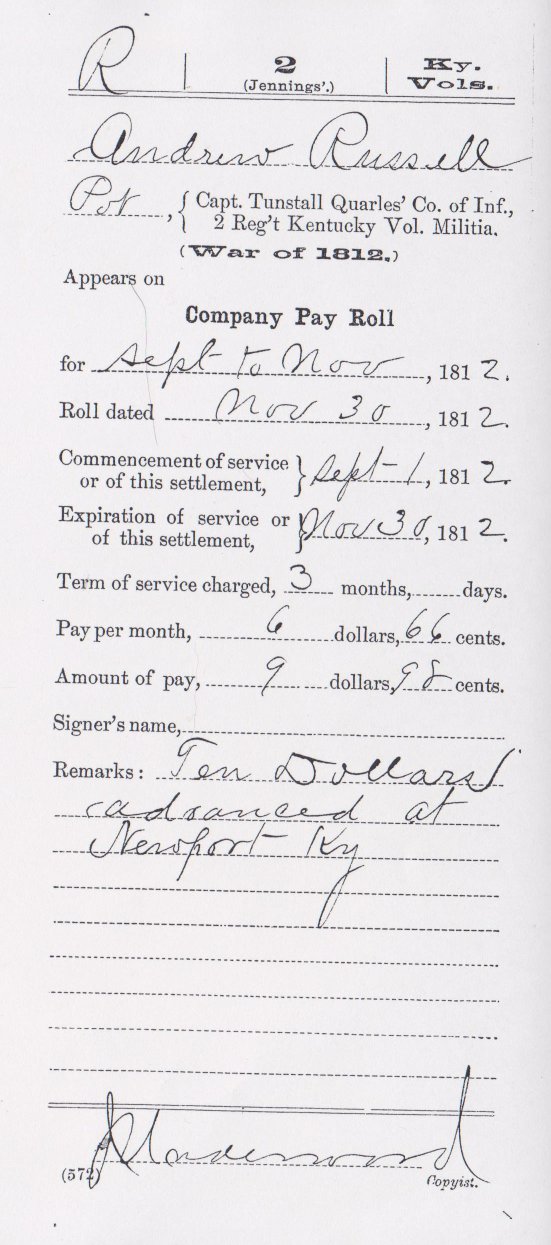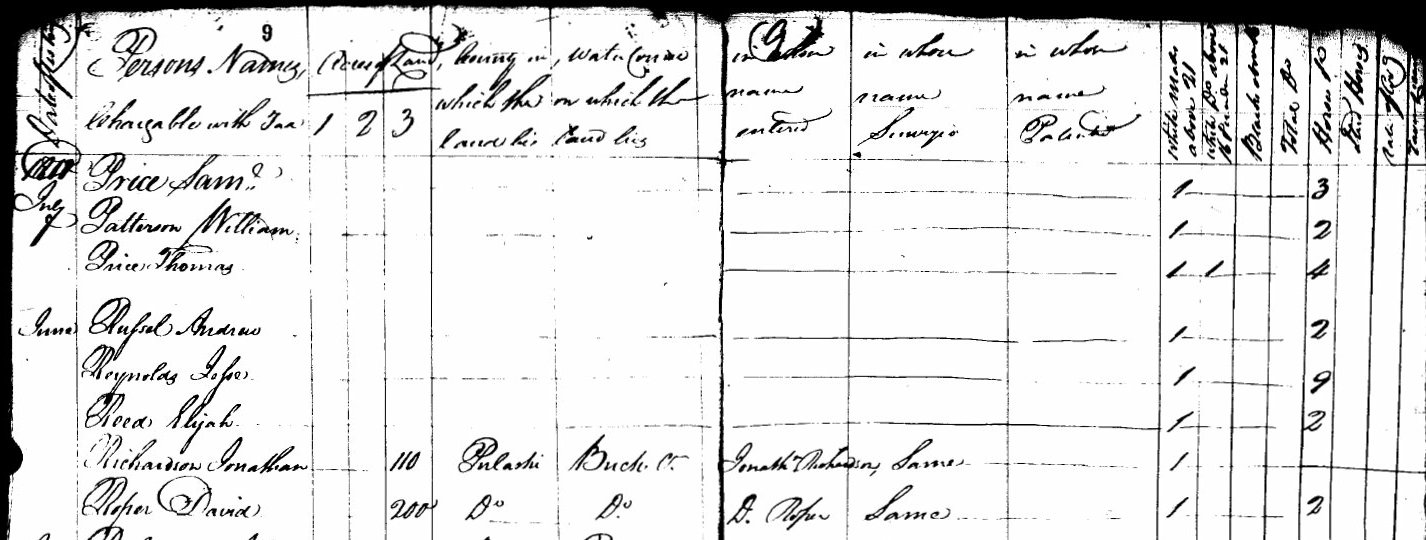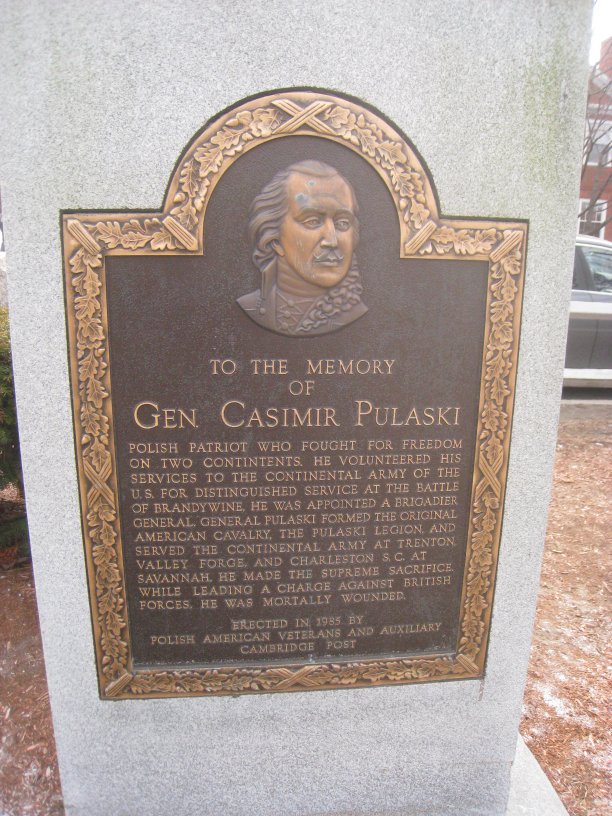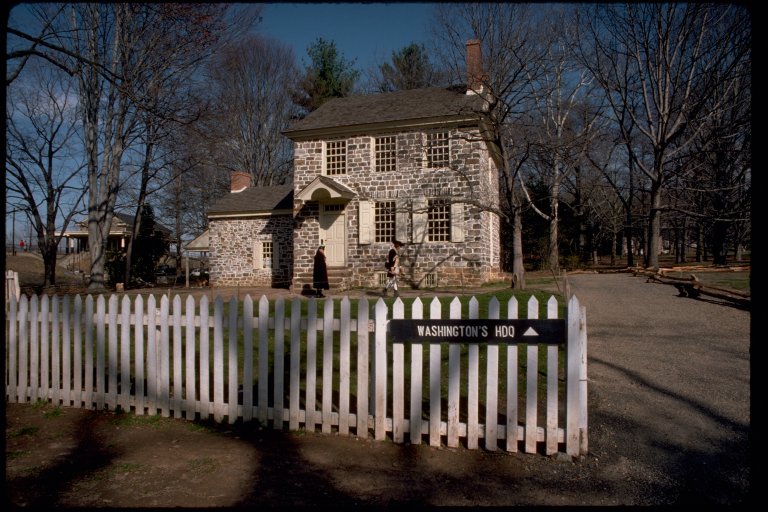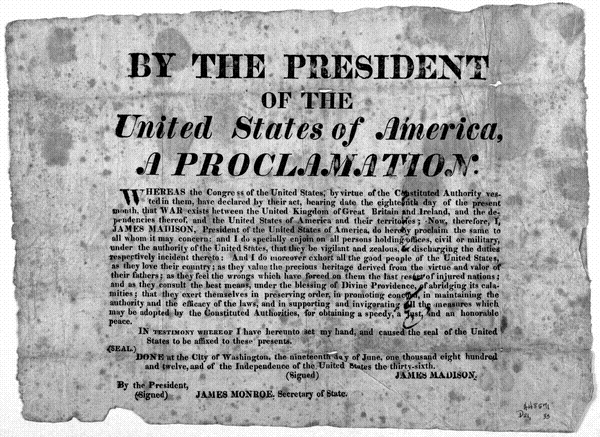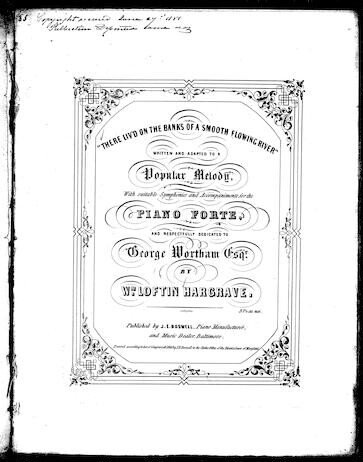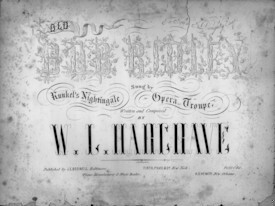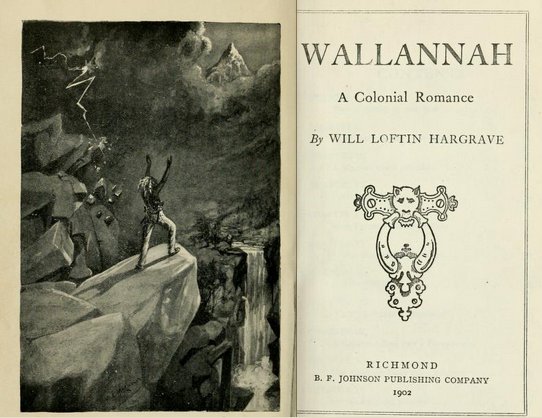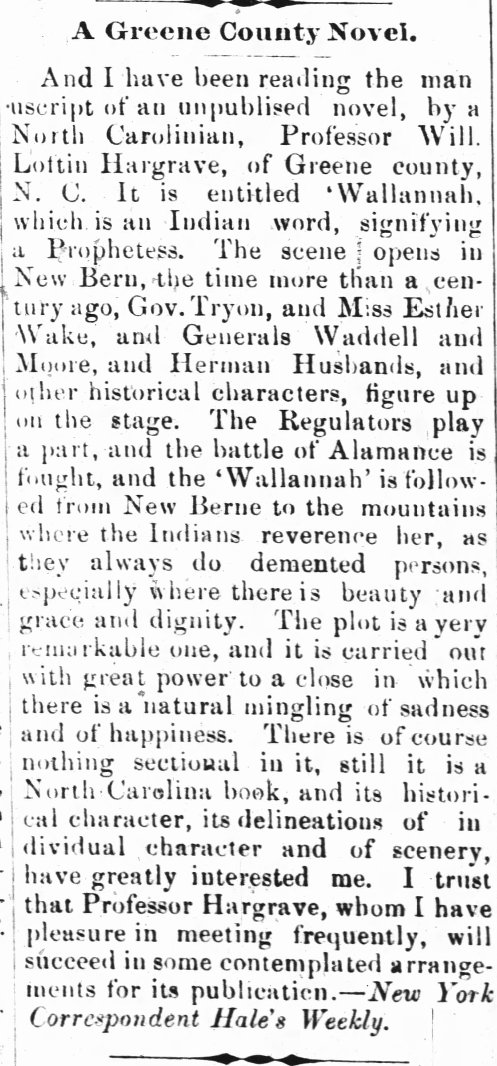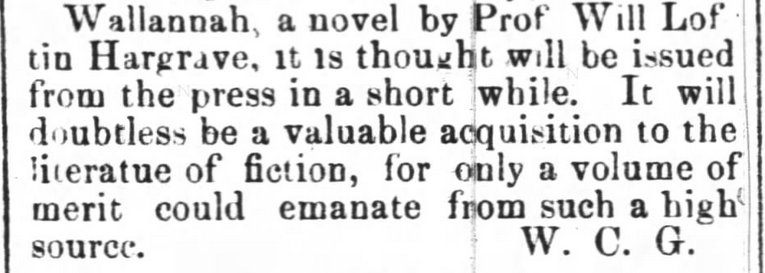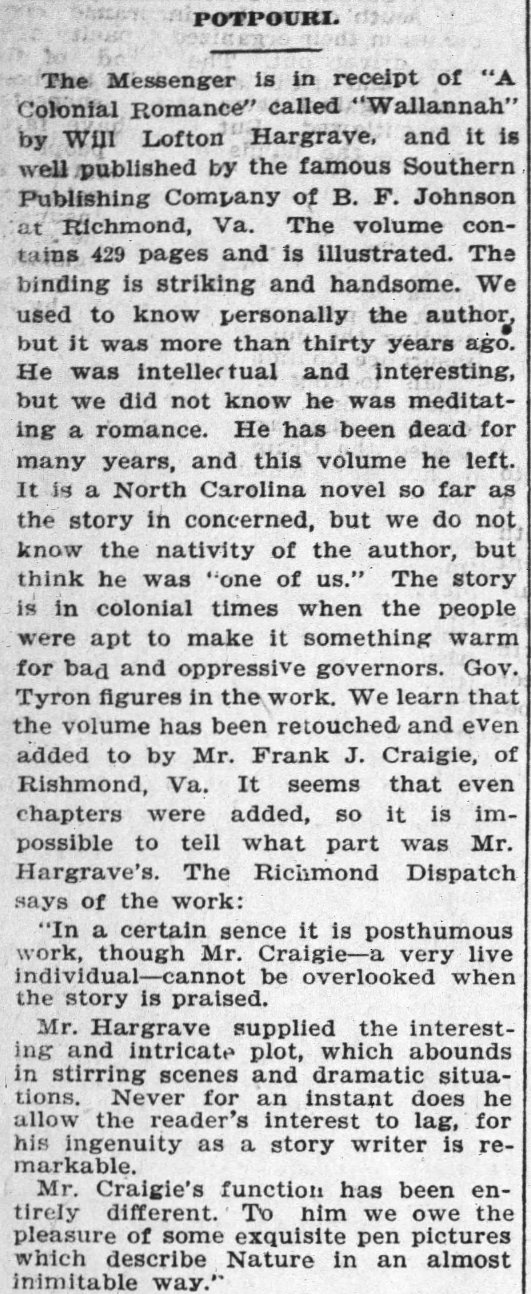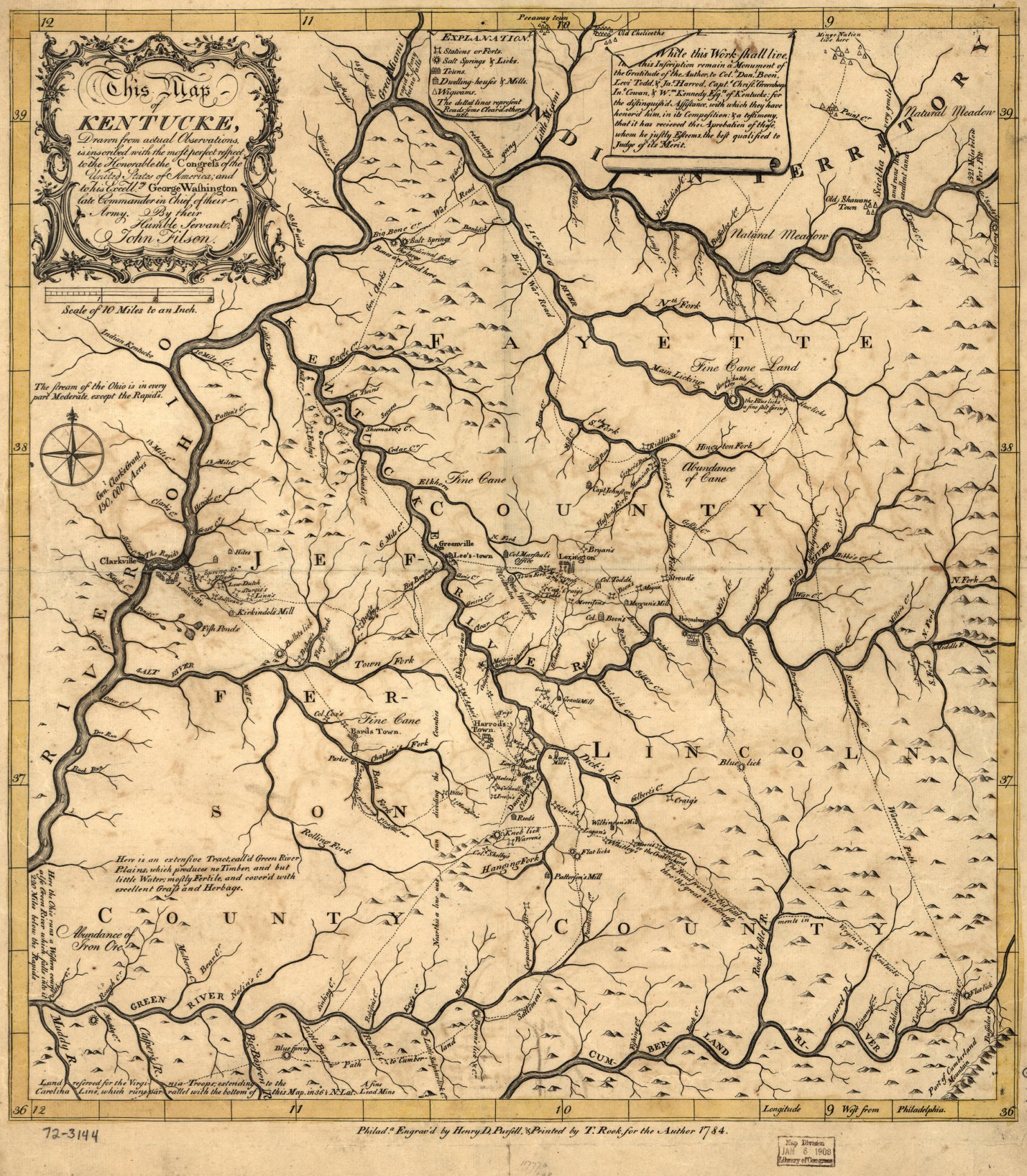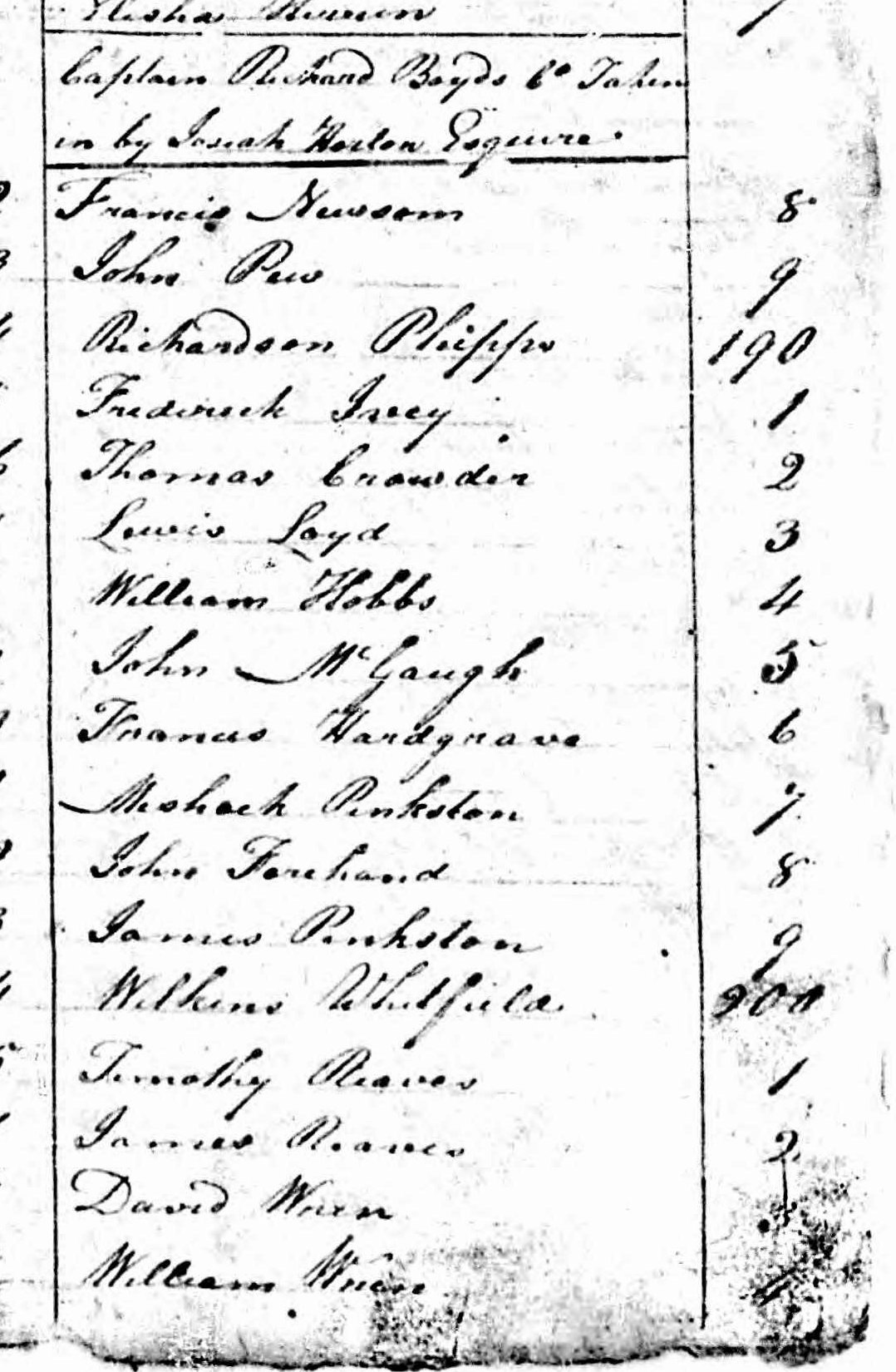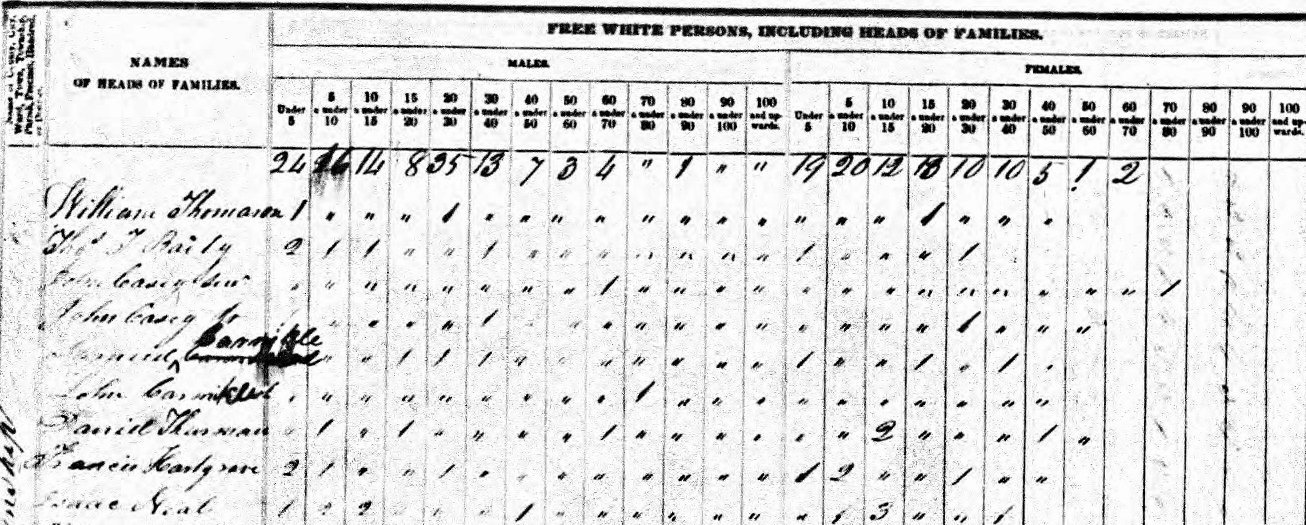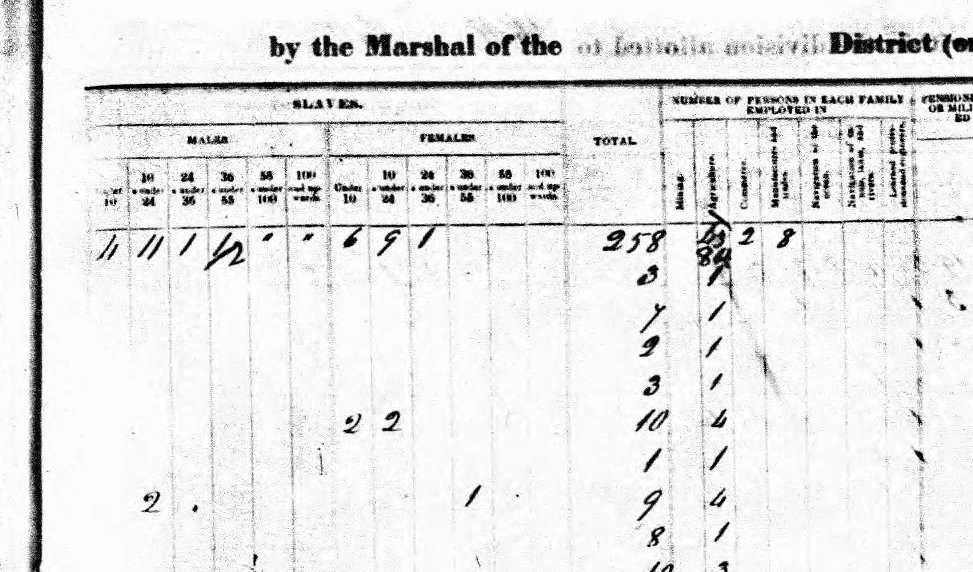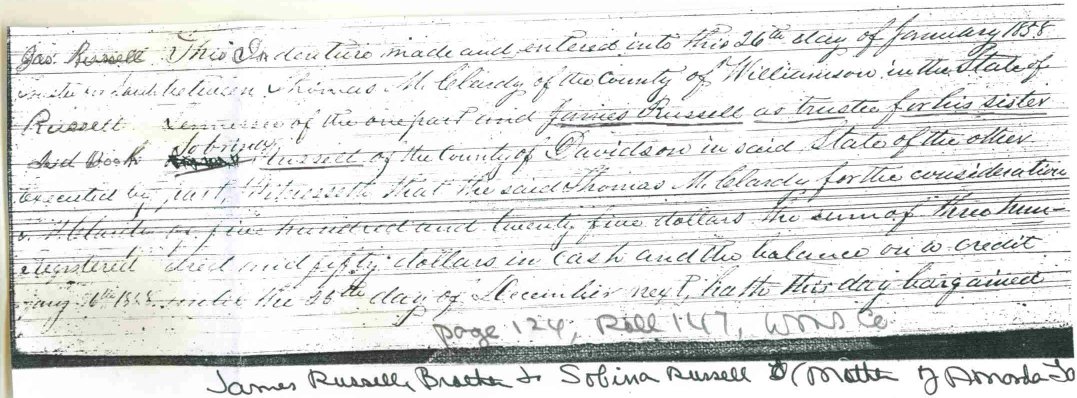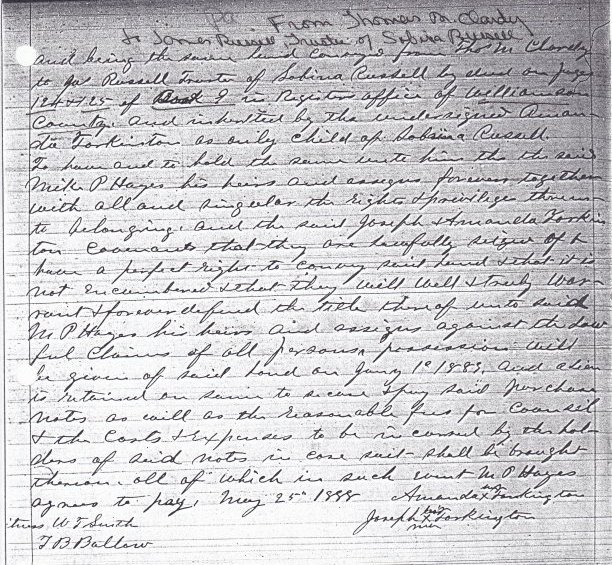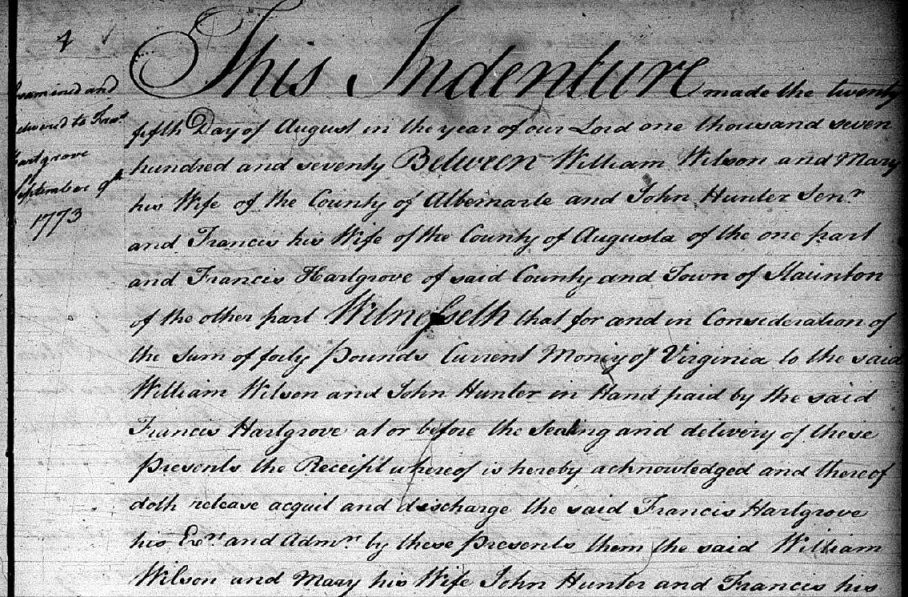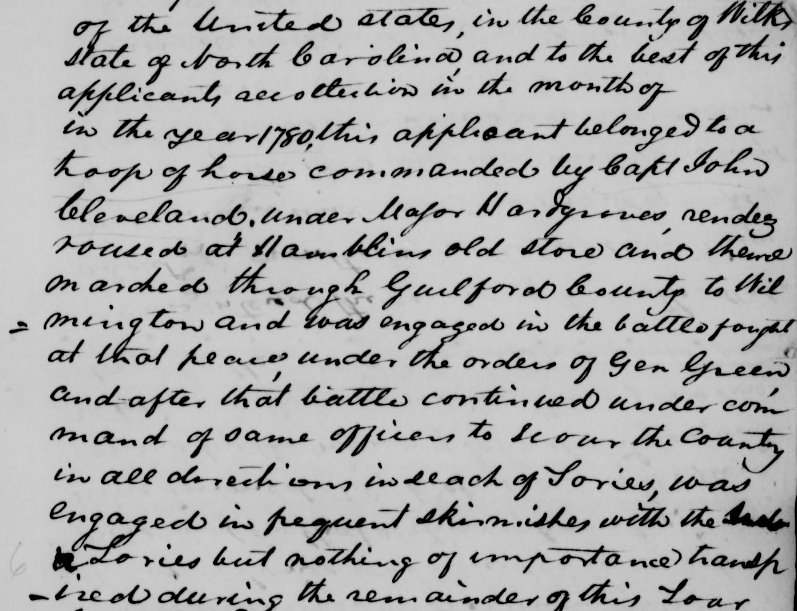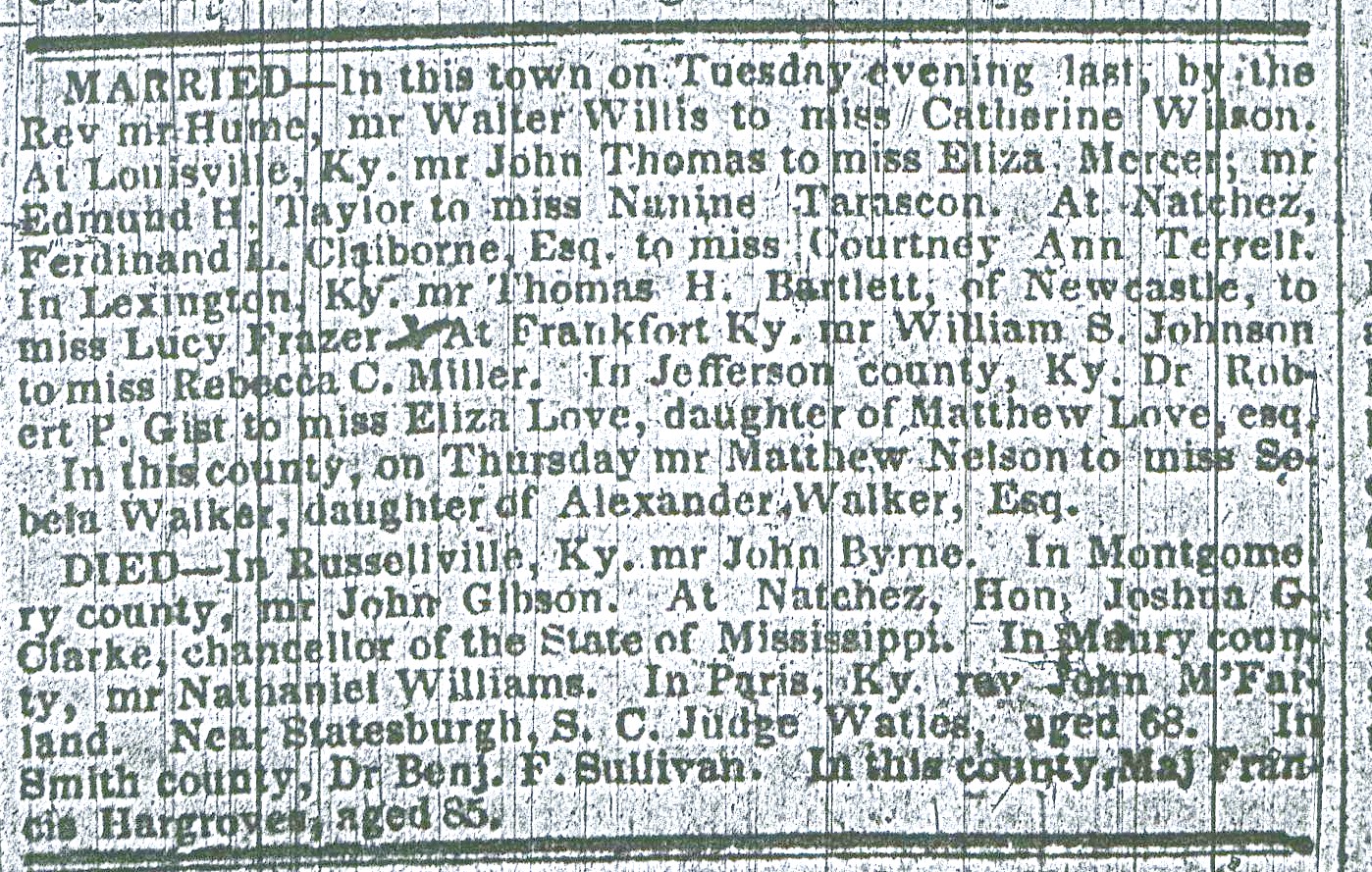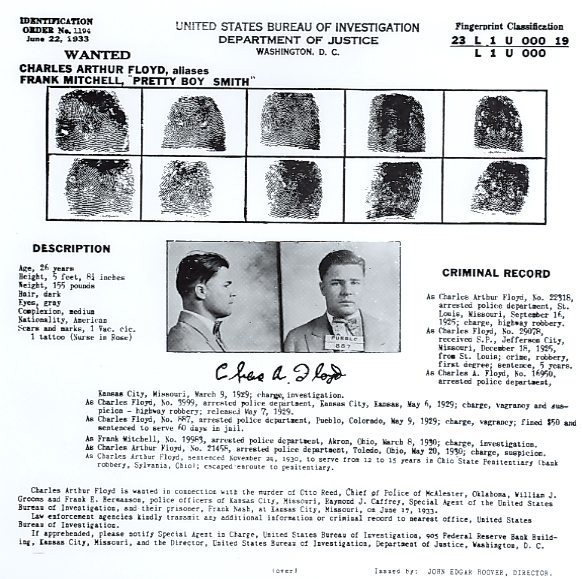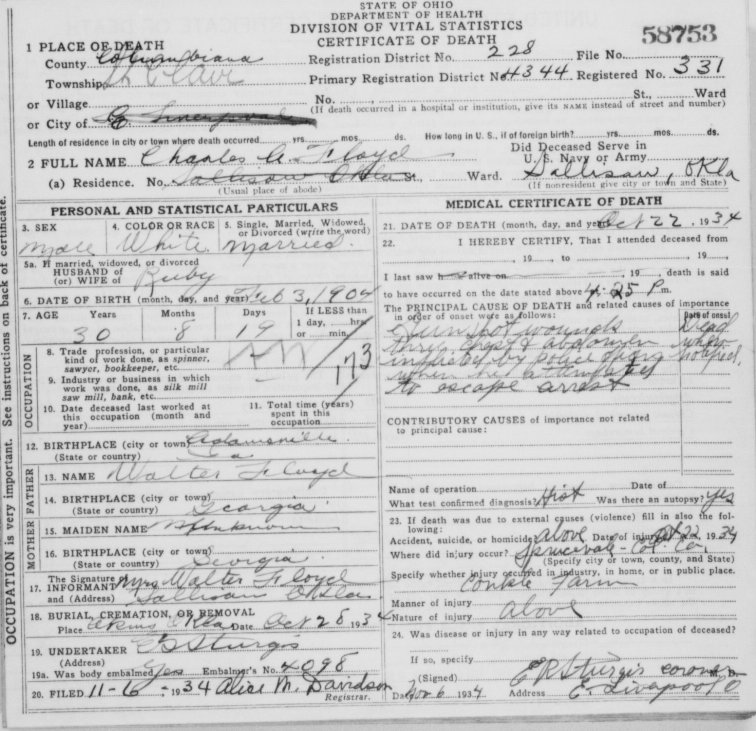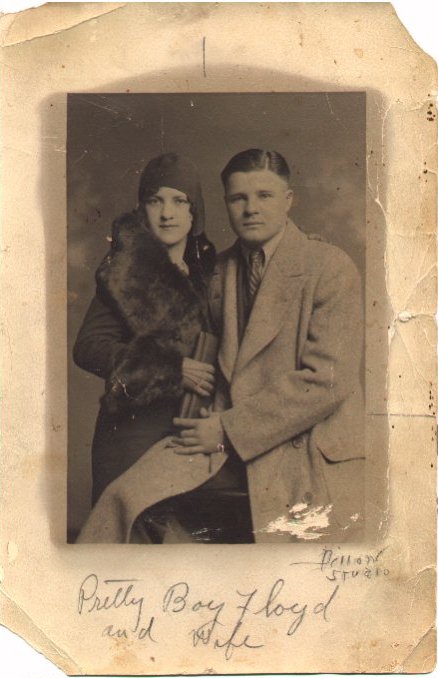Hector's last visit to his family before his duel with Achilles:
Astyanax, on Andromache's knees, stretches to touch his father's helmet.
Apulian red-figure column-crater, ca. 370–360 BC. From Ruvo. Stored in
the Museo Nazionale of the Palazzo Jatta in Ruvo di Puglia (Bari). Jastrow, 2006. Public domain. Wikimedia Commons.
One of the unusual names I have come across in my family tree is Astyanax. In Greek mythology, Astyanax was the son of the Trojan prince Hector and his wife Andromache.
The first Astyanax I have come across is Astyanax Mills, the son of Archibald Ewing Mills and Nancy Hardgrave (sister of my 5th-great-grandmother Hannah Hardgrave.) He was born in Kentucky and was a child when his father died around 1814. He may have died young. However, the name continued in the family.
Astyanax Mills Douglass (10 September 1838 - 1 March 1908) was the son of James S. Douglass and Caroline Mills (half-sister/half-first cousin of Astyanax Mills; daughter of Nancy Hardgrave and her second husband John F. Mills, the half-brother of Archibald Ewing Mills.) He was a physician, Confederate officer, and Texas state representative. He was born and raised in Sumner County, Tennessee. He studied medicine in Nashville and earned his medical degree in 1861. He served in Company I of the Sixth Mississippi Infantry Regiment and was promoted to 2nd Lieutenant after the Battle of Shiloh. After he was wounded in 1862, he went to Bowling Green, Kentucky and served as assistant surgeon. He returned to the Sixth Mississippi Infantry Regiment in 1863. After the war, he returned to Sumner County, Tennessee and practiced medicine, then moved to Covington, Hill County, Texas. He served in the Texas State Legislature from 13 January 1874-18 April 1876; 18 April 1876-14 January 1879; and 14 January 1879-11 January 1881, and served in the Texas State Senate from 10 January 1893-10 January 1895 and 13 January 1903-10 January 1905. He was chairman of the Texas State Board of Health and president of the Medical and Surgical Association of Hill County, the Medical Examining Board of the Eighteenth Judicial District, and the Confederate Veterans and Old Settlers Association of Hill County. He was profiled on the blog The Strangest Names in American Political History.
Astyanax Mills Douglass had a son, Astyanax Saunders Douglass (24 September 1871-27 April 1897), who had a son also named Astyanax Saunders Douglass (19 September 1897-26 January 1975.) This Astyanax was a Major League Baseball catcher. He played for the Cincinnati Reds in 1921 and 1925. He was a veteran of World War I. He was a coach at Amarillo High School in Amarillo, Texas, and named the team the Golden Sandstorms. He later founded Furniture Warehouse Stores of El Paso, Texas.
Elizabeth L. Mills, daughter of John F. Mills and his first wife Frances Thurmond, and stepsister/half-first cousin of Astyanax Mills, had a son named Astyanax Mills Duncan (6 February 1833-5 September 1921). He lived in and near Sumner County, Tennessee.
The name Astyanax was also used as a middle name in the family. Ann Hardgrave Mills, the daughter of Nancy Hardgrave and John F. Mills, had a son named Dero Astyanax Saunders (13 June 1858-28 June 1913). He lived in Mississippi. He had a son who was also named Dero Astyanax Saunders (9 March 1900-15 October 1961), who fathered a third Dero Astyanax Saunders (13 September 1931-15 March 1969.)
References
Bork, June, comp. Wayne County, Kentucky Deed Book B (1811-1818). San Diego, CA: June Bork, 1993. Deed abstracts: Joel Coffey & Patsy his wife to the heirs of Arch. E. Mills, dec'd, 24 Nov 1814; Joshua Jones Sr. & Hannah his wife to Nancy Mills, widow of Archibald Mills, et al., 9 Mar 1816.
Miller, Aragorn Storm. Douglass, Astyanax M. Handbook of Texas Online. Texas State Historical Association.
A. M. Douglass. Texas Legislators: Past and Present. Legislative Reference Library of Texas.
Find A Grave, Astyanax S Douglass
Astyanax Douglass - Wikipedia
Astyanax Douglass. Baseball Reference.
Astyanax Douglass - "A Horned Frog Makes Good"
Death notice, A. S. Douglass. El Paso Herald-Post, 27 Jan 1975, p. C-7.
"Concerning Names." El Paso Herald-Post, 1 Feb 1975, p. B-1.
Find A Grave, Astynas Mills Duncan
Find A Grave, Dero Astyanax Saunders
Find A Grave, Dero Astanyax Saunders
Find A Grave, Dero Astyanax Saunders, Jr.
Covering genealogy, family history, historical events and places, and anything else related!
Showing posts with label Hardgrave. Show all posts
Showing posts with label Hardgrave. Show all posts
Tuesday, January 22, 2019
Saturday, September 10, 2016
Sympathy Saturday: Non-Resident Heirs of Hannah (Hardgrave) Russell
Nashville Union and American, 22 December 1853, page 2
My 5th-great-grandmother Hannah (Hardgrave) Russell died in 1853. Skelton Demoss was the administrator of her estate. Some of her heirs were not residents of Tennessee, so they could not be served by the County Court of Davidson County, Tennessee. Her daughter Helen (Russell) Dawson was living in Missouri. Her son Mills Russell (incorrectly listed as Miles in the notice) had died in 1852, but he had three sons in Livingston County, Kentucky: Andrew Russell, John D. Russell, and Wesley Russell.
A notice was published in the Nashville Union and American, beginning on 22 December 1853 (the beginning date given at the bottom of the notice is December 23, but the newspaper issue that the notice appears in is dated December 22). The last notice was published on 9 February 1854. Mills Russell's sons and Helen Dawson were asked to appear at the courthouse in Nashville on the first Monday in February 1854 (6 February 1854).
Friday, April 15, 2016
Follow Friday: Tax Lists for Tax Day
Since today is Tax Day, it seemed an appropriate time to share some tax lists that are freely available.
New River Notes provides information about the Upper New River Valley of Virginia and North Carolina. It includes a 1787 Wilkes County, North Carolina tax list. My 6th-great-grandfather Francis Hardgrave is listed in Captain A. Trible's District, along with his Greer brothers-in-law. There is also a 1797 tax list for Wilkes County, North Carolina. By then, Francis Hardgrave had left Wilkes County. Other tax lists on the site are the 1774 list of tithables for Surry County, North Carolina; 1790 Surry County, North Carolina tax list; 1782 Montgomery County, Virginia land and personal property tax lists; 1802 Tazewell County, Virginia personal property tax list; 1806 Giles County, Virginia personal property tax list; 1810 Patrick County, Virginia personal property tax list; 1815 Ashe County, North Carolina tax list; 1831 Floyd County, Virginia personal property tax list; 1838 Smyth County, Virginia personal property tax lists (there is a separate list for free persons of color); and 1842 Carroll County, Virginia personal property tax list. There are numerous tax lists for Grayson County, Virginia and Washington County, Virginia.
Cape Fear Clans has the following tax lists: 1763 Bladen County, North Carolina tax list; 1755 Cumberland County, North Carolina tax list; 1801 list of taxable property for Captain Watson's district, Robeson County, North Carolina; and the 1825 tax list for Rockfish district, Cumberland County, North Carolina.
The Russell County, Virginia GenWeb has tax lists for Russell, County Virginia.
Images and partial transcriptions of the 1837 and 1838 Smith County, Tennessee tax lists and images of early Upcountry South Carolina tax lists are available at kenshelton.com.
The Sumner County, Tennessee Archives has Sumner County tax lists, 1795-1801. John Mills, the future husband of Francis Hardgrave's daughter Nancy (they married in 1820), was taxed in 1799 and 1800.
These are just a few examples. It's worthwhile to search and see if there are any free tax lists for your areas of interest. Although no one likes paying taxes, the taxpayers left us something useful: records of their residence in a particular place at a particular time, and possibly additional information.
New River Notes provides information about the Upper New River Valley of Virginia and North Carolina. It includes a 1787 Wilkes County, North Carolina tax list. My 6th-great-grandfather Francis Hardgrave is listed in Captain A. Trible's District, along with his Greer brothers-in-law. There is also a 1797 tax list for Wilkes County, North Carolina. By then, Francis Hardgrave had left Wilkes County. Other tax lists on the site are the 1774 list of tithables for Surry County, North Carolina; 1790 Surry County, North Carolina tax list; 1782 Montgomery County, Virginia land and personal property tax lists; 1802 Tazewell County, Virginia personal property tax list; 1806 Giles County, Virginia personal property tax list; 1810 Patrick County, Virginia personal property tax list; 1815 Ashe County, North Carolina tax list; 1831 Floyd County, Virginia personal property tax list; 1838 Smyth County, Virginia personal property tax lists (there is a separate list for free persons of color); and 1842 Carroll County, Virginia personal property tax list. There are numerous tax lists for Grayson County, Virginia and Washington County, Virginia.
Cape Fear Clans has the following tax lists: 1763 Bladen County, North Carolina tax list; 1755 Cumberland County, North Carolina tax list; 1801 list of taxable property for Captain Watson's district, Robeson County, North Carolina; and the 1825 tax list for Rockfish district, Cumberland County, North Carolina.
The Russell County, Virginia GenWeb has tax lists for Russell, County Virginia.
Images and partial transcriptions of the 1837 and 1838 Smith County, Tennessee tax lists and images of early Upcountry South Carolina tax lists are available at kenshelton.com.
The Sumner County, Tennessee Archives has Sumner County tax lists, 1795-1801. John Mills, the future husband of Francis Hardgrave's daughter Nancy (they married in 1820), was taxed in 1799 and 1800.
These are just a few examples. It's worthwhile to search and see if there are any free tax lists for your areas of interest. Although no one likes paying taxes, the taxpayers left us something useful: records of their residence in a particular place at a particular time, and possibly additional information.
Tuesday, April 5, 2016
Travel Tuesday: The Wilderness Road and the Cumberland Gap
Wilderness Road. Library of Congress. Public domain. Available from Wikimedia Commons.
For more than fifty years, people traveled to Kentucky via the Wilderness Road. The road began in Virginia, looped south into Tennessee, and then veered north into Kentucky. The route was 200 miles long.
In 1775, Daniel Boone was hired by the Transylvania Company to widen the path through the Cumberland Gap. In less than a month, he and his company of men cut a trail from Long Island, Tennessee (now Kingsport) to Kentucky.
Travel on the road was dangerous, and most people were armed so that they could protect themselves. Native Americans sometimes attacked travelers. In 1784, more than 100 people were killed on the Kentucky side of the Cumberland Gap.
More than 200,000 settlers passed through the Cumberland Gap. For the first twenty years, the gap was too narrow for wagons to cross. Travelers had to cross by foot or on horses. In 1796, the road was widened by James Knox and Joseph Crockett. Conestoga wagons were then able to cross the Cumberland Gap. The route became officially known as the Wilderness Road. Around that time, my 6th-great-grandparents Francis Hardgrave and Sarah (Greer) Hardgrave and their family (including my 5th-great-grandmother Hannah Hardgrave) traveled from Wilkes County, North Carolina to Lincoln County, Kentucky.
Course of the Wilderness Road. Nikater. Background map by Demis. Public domain. Available from Wikimedia Commons.
References
Cumberland Gap
Daniel Boone, 30 Woodsmen Blazed Famed 200-Mile Wilderness Road in Spring, 1775
Longfellow, Rickie. Back in Time: The Cumberland Gap
Whitaker, Beverly (2006). The Wilderness Road
Wilderness Road
Tuesday, February 23, 2016
Locating Hannah (Hardgrave) Russell's Property
The 1820 United States census shows that my 5th-great-grandmother Hannah (Hardgrave) Russell was living near her father, Francis Hardgrave.
1820 United States census, Davidson County, Tennessee, population schedule, page 60, NARA Roll M33_122, image74. Ancestry.com. 1820 United States Federal Census [database on-line]. Provo, UT, USA: Ancestry.com Operations, Inc., 2010.
Francis' will reveals that the property Hannah was living on belonged to him. He left the land to her, and specified that after her death, it was to go to her son James Russell.
Other documents provide more information about Hannah's residence.
In May 1822, Hannah found a three-year-old bay mare and placed an advertisement in the Nashville Whig to try to find the horse's owner.
Bay-colored 3/4 Arabian mare. 23 June 2006. Photo by Montanabw (Own work) [GFDL (http://www.gnu.org/copyleft/fdl.html), CC-BY-SA-3.0 (http://creativecommons.org/licenses/by-sa/3.0/) or CC BY-SA 2.5-2.0-1.0 (http://creativecommons.org/licenses/by-sa/2.5-2.0-1.0)]. Available from Wikimedia Commons.
At this time, she was living on Flat Creek in Davidson County, Tennessee, ten miles from Nashville.
When William Tillett gave a statement in support of my 3rd-great-grandmother (and Hannah's granddaughter) Amanda (Russell) Tarkington's Confederate Widows Pension, he mentioned that Amanda and Joseph Tarkington married "at the old Russell place on the Harding pike in Davidson County Tenn."
Statement of William Tillett. Tennessee Confederate pension application 2079, Widow's Indigent Pension. Amanda Tarkington, widow of Joseph Tarkington. Nashville, Tennessee: Tennessee State Library and Archives.
By finding Flat Creek and the Richland and Harding Turnpike on an 1871 map of Davidson County, Tennessee and seeing where they come together, it is possible to pinpoint the location of Hannah's property.
Excerpt from Foster, Wilbur F. Map of Davidson County Tennessee, from actual surveys made by order of the county court of Davidson County, 1871. New York : G.W. & C.B. Colton & Col., 1871. Available from Library of Congress.
1820 United States census, Davidson County, Tennessee, population schedule, page 60, NARA Roll M33_122, image74. Ancestry.com. 1820 United States Federal Census [database on-line]. Provo, UT, USA: Ancestry.com Operations, Inc., 2010.
Francis' will reveals that the property Hannah was living on belonged to him. He left the land to her, and specified that after her death, it was to go to her son James Russell.
Will of Francis Hardgrave, Davidson County, Tennessee, Will Book No. 9. Available from FamilySearch.
Other documents provide more information about Hannah's residence.
Nashville Whig, 22 May1822, page 3
In May 1822, Hannah found a three-year-old bay mare and placed an advertisement in the Nashville Whig to try to find the horse's owner.
Bay-colored 3/4 Arabian mare. 23 June 2006. Photo by Montanabw (Own work) [GFDL (http://www.gnu.org/copyleft/fdl.html), CC-BY-SA-3.0 (http://creativecommons.org/licenses/by-sa/3.0/) or CC BY-SA 2.5-2.0-1.0 (http://creativecommons.org/licenses/by-sa/2.5-2.0-1.0)]. Available from Wikimedia Commons.
At this time, she was living on Flat Creek in Davidson County, Tennessee, ten miles from Nashville.
View of the Harpeth River and Flat Creek. Google Earth.
When William Tillett gave a statement in support of my 3rd-great-grandmother (and Hannah's granddaughter) Amanda (Russell) Tarkington's Confederate Widows Pension, he mentioned that Amanda and Joseph Tarkington married "at the old Russell place on the Harding pike in Davidson County Tenn."
Statement of William Tillett. Tennessee Confederate pension application 2079, Widow's Indigent Pension. Amanda Tarkington, widow of Joseph Tarkington. Nashville, Tennessee: Tennessee State Library and Archives.
By finding Flat Creek and the Richland and Harding Turnpike on an 1871 map of Davidson County, Tennessee and seeing where they come together, it is possible to pinpoint the location of Hannah's property.
Excerpt from Foster, Wilbur F. Map of Davidson County Tennessee, from actual surveys made by order of the county court of Davidson County, 1871. New York : G.W. & C.B. Colton & Col., 1871. Available from Library of Congress.
Tuesday, December 29, 2015
52 Ancestors: Week 52 "Resolution": Andrew Russell
My 5th-great-grandfather Andrew Russell is one of my brick walls. I do not know when or where he was born, or who his parents were. Some online family trees state that he was born in 1778 in North Carolina, but I have never seen a source for this information. There were men named Andrew Russell in Augusta County, Virginia, where my Andrew Russell's wife's parents were from; I suspect that he may be related to them.
Andrew Russell married Hannah Hardgrave on 28 June 1799 in Lincoln County, Kentucky. In 1800, he lived in Pulaski County, Kentucky, which had been created from parts of Lincoln and Green Counties in December 1798.
He was one of the commissioners that helped to plan the town of Somerset (the county seat of Pulaski County) and arrange the location of public buildings such as the courthouse, jail, and stocks. (Pulaski County Fact Book II: Chapter 2: The Founding and Growth of Somerset.)
He was enumerated in Somerset in the 1810 United States census. This is the only census record that I have for him. His household consisted of 1 free white male age 26-44, 2 free white males under age 10, and 1 free white female age 26-44, 1 free white female age 10-15, and 3 free white females under age 10.
1810 United States census, Somerset, Pulaski County, Kentucky, roll 8, page 143, image 00135. Ancestry.com. 1810 United States Federal Census [database on-line]. Provo, UT, USA: Ancestry.com Operations, Inc., 2010.
Andrew was a private in Tunstall Quarles' Company of Infantry, 2nd Regiment Kentucky Volunteer Militia during the War of 1812. His regiment constructed Fort Jennings in Ohio and remained there on garrison duty. They later headed north up to Put-in-Bay, Ohio. They were sent back to Cincinnati and discharged in 1813. The 2nd Regiment Kentucky Volunteer Militia Reenactment Group's unit history provides more information on the regiment's activities.
Report of the Adjutant General of the State of Kentucky. Soldiers of the War of 1812. Printed by authority of the legislature of Kentucky. Frankfort, KY: E. Polk Johnson, 1891. Available from Internet Archive.
Compiled service record, Andrew Russell, Pvt., Tunstall Quarles' Company of Infantry, 2nd Regiment Kentucky Volunteer Militia, War of 1812. Record Group 94. National Archives, Washington, DC.
In the 1820 United States census, Andrew's wife Hannah was enumerated as head of household in Davidson County, Tennessee. Andrew may have died by 1820. I have found no further record of him.
This year I kept my resolution to obtain Andrew Russell's military records from the National Archives and Records Administration. In the coming year, I resolve to obtain land records. According to a Rootsweb family tree page for James Matthews (who rented land from Andrew Russell), Andrew Russell received two certificates for 100 and 300 acres of land on Pitman's Creek in June 1801. According to note 10, this information came from Pulaski County Order Books 1 and 2.
I will also take another look at the microfilmed Pulaski County, Kentucky tax lists at my local Family History Center. I made digital copies of the relevant pages, but some of the microfilm was very hard to read. Some of the copies are difficult to read; those pages might be a little easier to read if I go back to the microfilm. Fortunately some images, like the one below, are legible.
1800 Tax List, Pulaski County, Kentucky. Pulaski County (Kentucky). Tax Assessor. Tax books 1799-1822. Frankfort, Kentucky: Kentucky State Historical Society, 1952-1953. Family History Library microfilm 8209.
Andrew Russell married Hannah Hardgrave on 28 June 1799 in Lincoln County, Kentucky. In 1800, he lived in Pulaski County, Kentucky, which had been created from parts of Lincoln and Green Counties in December 1798.
He was one of the commissioners that helped to plan the town of Somerset (the county seat of Pulaski County) and arrange the location of public buildings such as the courthouse, jail, and stocks. (Pulaski County Fact Book II: Chapter 2: The Founding and Growth of Somerset.)
He was enumerated in Somerset in the 1810 United States census. This is the only census record that I have for him. His household consisted of 1 free white male age 26-44, 2 free white males under age 10, and 1 free white female age 26-44, 1 free white female age 10-15, and 3 free white females under age 10.
1810 United States census, Somerset, Pulaski County, Kentucky, roll 8, page 143, image 00135. Ancestry.com. 1810 United States Federal Census [database on-line]. Provo, UT, USA: Ancestry.com Operations, Inc., 2010.
Andrew was a private in Tunstall Quarles' Company of Infantry, 2nd Regiment Kentucky Volunteer Militia during the War of 1812. His regiment constructed Fort Jennings in Ohio and remained there on garrison duty. They later headed north up to Put-in-Bay, Ohio. They were sent back to Cincinnati and discharged in 1813. The 2nd Regiment Kentucky Volunteer Militia Reenactment Group's unit history provides more information on the regiment's activities.
Report of the Adjutant General of the State of Kentucky. Soldiers of the War of 1812. Printed by authority of the legislature of Kentucky. Frankfort, KY: E. Polk Johnson, 1891. Available from Internet Archive.
Compiled service record, Andrew Russell, Pvt., Tunstall Quarles' Company of Infantry, 2nd Regiment Kentucky Volunteer Militia, War of 1812. Record Group 94. National Archives, Washington, DC.
In the 1820 United States census, Andrew's wife Hannah was enumerated as head of household in Davidson County, Tennessee. Andrew may have died by 1820. I have found no further record of him.
This year I kept my resolution to obtain Andrew Russell's military records from the National Archives and Records Administration. In the coming year, I resolve to obtain land records. According to a Rootsweb family tree page for James Matthews (who rented land from Andrew Russell), Andrew Russell received two certificates for 100 and 300 acres of land on Pitman's Creek in June 1801. According to note 10, this information came from Pulaski County Order Books 1 and 2.
I will also take another look at the microfilmed Pulaski County, Kentucky tax lists at my local Family History Center. I made digital copies of the relevant pages, but some of the microfilm was very hard to read. Some of the copies are difficult to read; those pages might be a little easier to read if I go back to the microfilm. Fortunately some images, like the one below, are legible.
1800 Tax List, Pulaski County, Kentucky. Pulaski County (Kentucky). Tax Assessor. Tax books 1799-1822. Frankfort, Kentucky: Kentucky State Historical Society, 1952-1953. Family History Library microfilm 8209.
Labels:
52 Ancestors,
Hardgrave,
Kentucky,
Ohio,
Russell,
War of 1812
Sunday, October 11, 2015
General Pulaski Memorial Day
General Casimir Pulaski plaque, Cambridge Commons, Cambridge, Massachusetts. Photo by Daderot (Own work) [Public domain], 14 February 2010. Available from Wikimedia Commons.
October 11 is General Pulaski Memorial Day, in honor of Casimir (Kazimierz) Pulaski. In 1929, Congress passed a resolution designating October 11 as General Pulaski Memorial Day. Since 1931, a presidential proclamation has been issued for the holiday every year.
Kazimierz Michał Władysław Wiktor Pułaski was born on 6 March 1745 in Warsaw, Poland. He and his father Józef Pulaski were among the founders of the Bar Confederation, an association formed to defend Poland against Russia and King Stanisław August Poniatowski. Pulaski became the commander after his father died in 1769. One of his military accomplishments was taking control of the Jasna Góra Monastery in September 1770. In 1771 members of the Bar Confederation attempted to kidnap King Stanisław August Poniatowski, and Pulaski was implicated. He went to Silesia, Prussia in 1772 and met with Franciszka Corvin-Krasińska, the wife of Charles of Saxony, Duke of Courland. He went to France in 1773, and attempted to join the French Army, but was unsuccessful. He spent some time in a debtors' prison in 1775. He met Benjamin Franklin in 1777. Franklin and the Marquis de Lafayette recruited him for service in the Continental Army.
On 23 July 1777, Pulaski arrived in Marblehead, Massachusetts. He traveled to Pennsylvania in August, and met George Washington. His first battle in North America was the Battle of Brandywine on 11 September 1777. Pulaski gathered troops together and charged in order to prevent the British from retreating. On 15 September 1777, Washington made Pulaski a brigadier general in the Continental Army cavalry.
Pulaski participated in the Battle of Germantown, and spent the winter of 1777-1778 at Valley Forge. He assisted General Anthony Wayne in February 1778, but returned to Valley Forge in March.
Pulaski created a new cavalry regiment, Pulaski's Legion. Its headquarters were in Baltimore, Maryland, and most of the men were recruited there.They participated in the Little Egg Harbor Massacre on 15 October 1778.
On 8 May 1779, Pulaski arrived in Charleston, South Carolina.In September, he headed to Georgia. Pulaski's regiment served as advance guard for Admiral Charles Hector, comte d'Estaing's troops. Pulaski commanded both the French and American cavalry on 9 October 1779 at the Siege of Savannah. He was wounded by grapeshot and carried off the battlefield. He died on 11 or 15 October 1779.
My 5th-great-grandfather Stephen Mayo also participated in the battles of Brandywine and Germantown. He and his brother Benjamin were at Valley Forge together.
Pulaski County, Kentucky is named for Casimir Pulaski. My 5th-great-grandparents Andrew and Hannah (Hardgrave) Russell lived in Pulaski County, Kentucky, and my 4th-great-grandmother Sobrina Russell was probably born there.
References
Bar Confederation
Casimir Pulaski
Casimir Pulaski, Father of the U.S. Cavalry
A Chronology of Casimir Pulaski's Life 1745-1779
General Casimir Pulaski (1745-1779)
General Pulaski Memorial Day
October 11 is General Pulaski Memorial Day, in honor of Casimir (Kazimierz) Pulaski. In 1929, Congress passed a resolution designating October 11 as General Pulaski Memorial Day. Since 1931, a presidential proclamation has been issued for the holiday every year.
Kazimierz Michał Władysław Wiktor Pułaski was born on 6 March 1745 in Warsaw, Poland. He and his father Józef Pulaski were among the founders of the Bar Confederation, an association formed to defend Poland against Russia and King Stanisław August Poniatowski. Pulaski became the commander after his father died in 1769. One of his military accomplishments was taking control of the Jasna Góra Monastery in September 1770. In 1771 members of the Bar Confederation attempted to kidnap King Stanisław August Poniatowski, and Pulaski was implicated. He went to Silesia, Prussia in 1772 and met with Franciszka Corvin-Krasińska, the wife of Charles of Saxony, Duke of Courland. He went to France in 1773, and attempted to join the French Army, but was unsuccessful. He spent some time in a debtors' prison in 1775. He met Benjamin Franklin in 1777. Franklin and the Marquis de Lafayette recruited him for service in the Continental Army.
On 23 July 1777, Pulaski arrived in Marblehead, Massachusetts. He traveled to Pennsylvania in August, and met George Washington. His first battle in North America was the Battle of Brandywine on 11 September 1777. Pulaski gathered troops together and charged in order to prevent the British from retreating. On 15 September 1777, Washington made Pulaski a brigadier general in the Continental Army cavalry.
Pulaski participated in the Battle of Germantown, and spent the winter of 1777-1778 at Valley Forge. He assisted General Anthony Wayne in February 1778, but returned to Valley Forge in March.
Pulaski created a new cavalry regiment, Pulaski's Legion. Its headquarters were in Baltimore, Maryland, and most of the men were recruited there.They participated in the Little Egg Harbor Massacre on 15 October 1778.
On 8 May 1779, Pulaski arrived in Charleston, South Carolina.In September, he headed to Georgia. Pulaski's regiment served as advance guard for Admiral Charles Hector, comte d'Estaing's troops. Pulaski commanded both the French and American cavalry on 9 October 1779 at the Siege of Savannah. He was wounded by grapeshot and carried off the battlefield. He died on 11 or 15 October 1779.
My 5th-great-grandfather Stephen Mayo also participated in the battles of Brandywine and Germantown. He and his brother Benjamin were at Valley Forge together.
Pulaski County, Kentucky is named for Casimir Pulaski. My 5th-great-grandparents Andrew and Hannah (Hardgrave) Russell lived in Pulaski County, Kentucky, and my 4th-great-grandmother Sobrina Russell was probably born there.
References
Bar Confederation
Casimir Pulaski
Casimir Pulaski, Father of the U.S. Cavalry
A Chronology of Casimir Pulaski's Life 1745-1779
General Casimir Pulaski (1745-1779)
General Pulaski Memorial Day
Tuesday, August 25, 2015
Founders' Day, the Birthday of the National Park Service
On 25 August 1916, President Woodrow Wilson signed the act that established the National Park Service. Every year on August 25, the National Park Service celebrates Founders Day.
My parents have visited some of the national parks, including Yellowstone National Park and Yosemite National Park.
I took this picture at one of the newest national parks, the Paterson Great Falls National Historical Park.
Some places where my ancestors spent time are now national historical parks. My 5th-great-grandfather Stephen Mayo and his brother Benjamin camped at Valley Forge during the revolutionary War. My 5th-great-grandmother Hannah Hardgrave and her parents, my 6th-great-grandparents Francis Hardgrave and Sarah Greer, passed through the Cumberland Gap when they traveled from Wilkes County, North Carolina to Kentucky.
My parents have visited some of the national parks, including Yellowstone National Park and Yosemite National Park.
I took this picture at one of the newest national parks, the Paterson Great Falls National Historical Park.
Paterson Great Falls National Historical Park
Some places where my ancestors spent time are now national historical parks. My 5th-great-grandfather Stephen Mayo and his brother Benjamin camped at Valley Forge during the revolutionary War. My 5th-great-grandmother Hannah Hardgrave and her parents, my 6th-great-grandparents Francis Hardgrave and Sarah Greer, passed through the Cumberland Gap when they traveled from Wilkes County, North Carolina to Kentucky.
Valley Forge National Historical Park. Photo from the National Park Service.
Cumberland Gap National Historical Park. Photo from the National Park Service.
Chellberg Farm is now part of the Indiana Dunes National Lakeshore. My 2nd-great-grandmother's brother Alfred Borg married Emily Kjellberg, and they lived at Chellberg Farm.
1885 brick house on Chellberg Farm. Photo by Chris Light at en.wikipedia [CC BY-SA 3.0 (http://creativecommons.org/licenses/by-sa/3.0) or GFDL (http://www.gnu.org/copyleft/fdl.html)]. Available from Wikimedia Commons.
Indiana Dunes National Lakeshore. Photo from the National Park Service.
Thursday, June 18, 2015
Presidential Proclamation - War of 1812
Madison, James. By the President of the United States of America, a proclamation. Washington, DC, 1812. Printed Ephemera Collection; Portfolio 228, Folder 8. Imprint 2. Printed Ephemera Collection; Portfolio 228, Folder 8. Digital ID rbpe 22800800 http://hdl.loc.gov/loc.rbc/rbpe.22800800.
The War of 1812 began 203 years ago today. On 18 June 1812, President James Madison issued a proclamation which stated that the United States and the United Kingdom were at war.
Some of my ancestors and other relatives participated in the War of 1812. The ones that I know of are Chapman Gordon, Francis Hardgrave, Skelton Hardgrave, Elias L. Mayo, Thomas Mayo, and Andrew Russell.
The War of 1812 began 203 years ago today. On 18 June 1812, President James Madison issued a proclamation which stated that the United States and the United Kingdom were at war.
Some of my ancestors and other relatives participated in the War of 1812. The ones that I know of are Chapman Gordon, Francis Hardgrave, Skelton Hardgrave, Elias L. Mayo, Thomas Mayo, and Andrew Russell.
Thursday, May 7, 2015
Bill of Sale with Redemption: William Harding and James Hartgraves to Matthew Tennison
The information below is a summary of a published transcription/abstract; I have not seen the original document. James was the oldest son of my 6th-great-grandparents Francis Hardgrave and Sarah Greer.
William Harding and James Hartgraves sold Matthew Tennison a negro man named Dick. Dick was to be the property of Matthew Tennison until William Harding and James Hartgraves paid Matthew Tennison 75 dollars. The Bill of Sale with Redemption was proven in open court by the oath of James Demoss during the October 1809 term, and it was registered in Davidson County, Tennessee Deed Book H on 22 December 1809.
References
Smith, Mary Sue. Davidson County, Tennessee Deed Book H 1809-1821. Bowie, MD: Heritage Books, 2000.
William Harding and James Hartgraves sold Matthew Tennison a negro man named Dick. Dick was to be the property of Matthew Tennison until William Harding and James Hartgraves paid Matthew Tennison 75 dollars. The Bill of Sale with Redemption was proven in open court by the oath of James Demoss during the October 1809 term, and it was registered in Davidson County, Tennessee Deed Book H on 22 December 1809.
References
Smith, Mary Sue. Davidson County, Tennessee Deed Book H 1809-1821. Bowie, MD: Heritage Books, 2000.
Wednesday, May 6, 2015
Slaves Purchased By John Hardgrave, 1819-1820
I have summarized the below information about the slaves purchased by John Hardgrave, the son of my 6th-great-grandparents Francis Hardgrave and Sarah Greer, in Davidson County, Tennessee. I have not seen the original deeds; the information is based on published transcriptions/abstracts.
On 16 February 1819, Sanford Coil of Burk County, Georgia sold a negro man named Jesse, between 24 and 26 years old, to John Hardgrave. The bill of sale was registered in Davidson County, Tennessee Deed Book H on 17 November 1820.
On 15 July 1820, John Demoss sold a negro man named Harry, about 28 years old, to John Hardgrave. Harry was in Louisiana and was supposed to be in possession of Skelton Hardgraves (John Hardgrave's younger brother). The bill of sale was registered in Davidson County, Tennessee Deed Book H on 16 November 1820. John Demoss had purchased Harry from Sanford Coil of Burk County, Georgia on 16 February 1819. At the time, Harry was said to be between 25 and 30 years old. The bill of sale was registered in Davidson County, Tennessee Deed Book H on 16 August 1819.
References
Smith, Mary Sue. Davidson County, Tennessee Deed Book H 1809-1821. Bowie, MD: Heritage Books, 2000.
On 16 February 1819, Sanford Coil of Burk County, Georgia sold a negro man named Jesse, between 24 and 26 years old, to John Hardgrave. The bill of sale was registered in Davidson County, Tennessee Deed Book H on 17 November 1820.
On 15 July 1820, John Demoss sold a negro man named Harry, about 28 years old, to John Hardgrave. Harry was in Louisiana and was supposed to be in possession of Skelton Hardgraves (John Hardgrave's younger brother). The bill of sale was registered in Davidson County, Tennessee Deed Book H on 16 November 1820. John Demoss had purchased Harry from Sanford Coil of Burk County, Georgia on 16 February 1819. At the time, Harry was said to be between 25 and 30 years old. The bill of sale was registered in Davidson County, Tennessee Deed Book H on 16 August 1819.
References
Smith, Mary Sue. Davidson County, Tennessee Deed Book H 1809-1821. Bowie, MD: Heritage Books, 2000.
Saturday, April 25, 2015
Bills of Sale Between Francis Hardgrave and His Descendants
I have summarized the below information about the slaves that my 6th-great-grandfather Francis Hardgrave sold or gave to his descendants. I have not seen the original deeds; the information is based on published transcriptions/abstracts.
On 7 April 1818, Francis Hardgrave sold his sons John and Skelton Hardgrave seven negro slaves named Phillis, Jurdon, Darkcus, Allen, Claborne, Colman, and Charles. The bill of sale was registered in Davidson County, Tennessee Deed Book H on 12 November 1818.
On 8 April 1818, Francis Hardgrave sold his sons John and Skelton Hardgrave a negro boy named Green. The bill of sale was registered in Davidson County, Tennessee Deed Book H on 12 November 1818.
On 19 October 1818, sold his sons John and Skelton Hardgrave a negro man named Stephen. The bill of sale was registered in Davidson County, Tennessee Deed Book H on 12 November 1818.
On 1 May 1828, Francis Hardgrave gave and conveyed a negro boy named Henry, about six years old, to his grandson Thomas Francis Hardgrave. The bill of sale was registered in Davidson County, Tennessee Deed Book P on 23 May 1828.
References
Smith, Mary Sue. Davidson County, Tennessee Deed Book H 1809-1821. Bowie, MD: Heritage Books, 2000.
Smith, Mary Sue. Davidson County, Tennessee Deed Book "P" Personal Property Deeds 15 November 1821 - 13 February 1829. Bowie, MD: Heritage Books, 2010.
On 7 April 1818, Francis Hardgrave sold his sons John and Skelton Hardgrave seven negro slaves named Phillis, Jurdon, Darkcus, Allen, Claborne, Colman, and Charles. The bill of sale was registered in Davidson County, Tennessee Deed Book H on 12 November 1818.
On 8 April 1818, Francis Hardgrave sold his sons John and Skelton Hardgrave a negro boy named Green. The bill of sale was registered in Davidson County, Tennessee Deed Book H on 12 November 1818.
On 19 October 1818, sold his sons John and Skelton Hardgrave a negro man named Stephen. The bill of sale was registered in Davidson County, Tennessee Deed Book H on 12 November 1818.
On 1 May 1828, Francis Hardgrave gave and conveyed a negro boy named Henry, about six years old, to his grandson Thomas Francis Hardgrave. The bill of sale was registered in Davidson County, Tennessee Deed Book P on 23 May 1828.
References
Smith, Mary Sue. Davidson County, Tennessee Deed Book H 1809-1821. Bowie, MD: Heritage Books, 2000.
Smith, Mary Sue. Davidson County, Tennessee Deed Book "P" Personal Property Deeds 15 November 1821 - 13 February 1829. Bowie, MD: Heritage Books, 2010.
Tuesday, April 21, 2015
Talented Tuesday: Will Loftin Hargrave, Composer and Author
Will Loftin Hargrave, the son of my 5th-great-grandmother's brother Skelton Hardgrave, was an author and composer. The Library of Congress has sheet music for several songs that he composed.
His compositions "There Liv'd on the Banks of a Smooth Flowing River" and "Wait for the Wagon" were published in 1851.
His composition "Old Bob Ridley" was published in 1853. It was performed by Kunkel's Nightingale Opera Troupe.
His book Wallannah: A Colonial Romance was published by B. F. Johnson Publishing Company in 1902 (twenty years after his death.) The book is set in New Bern, North Carolina.
References
Old Bob Ridley [sheet music]
There liv'd on the banks of a smooth flowing river [sheet music]
Wait for the wagon [sheet music]
Wallannah: A Colonial Romance (East Carolina University Digital Collections)
Wallannah: A Colonial Romance (Internet Archive)
There liv'd on the banks of a smooth flowing river [sheet music]. Library of Congress Peforming Arts Encyclopedia.
Wait for the wagon [sheet music]. Library of Congress Performing Arts Encyclopedia.
His compositions "There Liv'd on the Banks of a Smooth Flowing River" and "Wait for the Wagon" were published in 1851.
Old Bob Ridley [sheet music]. Library of Congress Performing Arts Encyclopedia.
His composition "Old Bob Ridley" was published in 1853. It was performed by Kunkel's Nightingale Opera Troupe.
Wallannah: A Colonial Romance. Internet Archive.
His book Wallannah: A Colonial Romance was published by B. F. Johnson Publishing Company in 1902 (twenty years after his death.) The book is set in New Bern, North Carolina.
Kinston Journal (Kinston, North Carolina), 13 November 1879, page 2
Goldsboro Messenger (Goldsboro, North Carolina), 15 January 1883, page 1
Semi-Weekly Messenger (Wilmington, North Carolina),11 March 1902, page 4
References
Old Bob Ridley [sheet music]
There liv'd on the banks of a smooth flowing river [sheet music]
Wait for the wagon [sheet music]
Wallannah: A Colonial Romance (East Carolina University Digital Collections)
Wallannah: A Colonial Romance (Internet Archive)
Monday, April 20, 2015
Mappy Monday: Map of Kentucke, 1784
Map of Kentucke. From The Discovery, Settlement and Present State of Kentucke, by John Filson (1784). Public domain. Available from DigitalCommons@University of Nebraska-Lincoln and Wikimedia Commons.
This 1784 map by John Filson is the first known map of Kentucky. Filson dedicated the map to the United States Congress and to George Washington.
My Hardgrave ancestors came to Lincoln County, Kentucky around 1795. My 5th-great-grandparents Hannah Hardgrave and Andrew Russell married in Lincoln County in 1799, and afterward lived in Pulaski County, which was created out of Lincoln and Green Counties.
This 1784 map by John Filson is the first known map of Kentucky. Filson dedicated the map to the United States Congress and to George Washington.
My Hardgrave ancestors came to Lincoln County, Kentucky around 1795. My 5th-great-grandparents Hannah Hardgrave and Andrew Russell married in Lincoln County in 1799, and afterward lived in Pulaski County, which was created out of Lincoln and Green Counties.
Wednesday, April 15, 2015
Tax Day
Since 1955, April 15 has been Tax Day. Federal income taxes began during the Civil War, when the Revenue Act of 1861 was passed. The Revenue Act was repealed in 1871. The first peacetime income tax was imposed in 1894, when the Wilson-Gorman Tariff Act was passed. One year later, the Supreme Court ruled that the tax was unconstitutional in Pollock v. Farmers' Loan and Trust Company. The Sixteenth Amendment (passed on 2 July 1909 and ratified on 3 February 1913) gave the United States Congress the right to impose a federal income tax. From 1913 10 1918, the deadline for filing tax returns was March 1. It was then changed to March 15. In 1955, April 15 became the deadline.
Other taxes have been collected in the United States since colonial times. In 1800, my 5th-great-grandfather Andrew Russell was listed as a taxpayer in Pulaski County, Kentucky. He was the only white male over 21 in his household. (He had married my 5th-great-grandmother Hannah Hardgrave a year earlier.) He had two horses.
1800 Tax List, Pulaski County, Kentucky. Pulaski County (Kentucky). Tax Assessor. Tax books 1799-1822. Frankfort, Kentucky: Kentucky State Historical Society, 1952-1953. Family History Library microfilm 8209.
In 1811, my 6th-great-grandfather Francis Hardgrave (the father of Hannah, Andrew Russell's wife) was listed as a taxpayer in Davidson County, Tennessee.
1811 Tax List, Davidson County, Tennessee. Ancestry.com. Tennessee, Early Tax List Records, 1783-1895 [database on-line]. Provo, UT, USA: Ancestry.com Operations, Inc., 2013. Original data: Early Tax Lists of Tennessee. Microfilm, 12 rolls. The Tennessee State Library and Archives, Nashville, Tennessee.
References
April 15: More Than You Ever Wanted to Know About Tax Day
A Century of Income Taxes: The History of Tax Day
History of the US Income Tax
Lincoln imposes first federal income tax
Pollock v. Farmers' Loan and Trust Company
Revenue Act of 1861
16th Amendment to the U.S. Constitution: Federal Income Tax (1913)
United States Taxation
Wilson-Gorman Tariff Act
Other taxes have been collected in the United States since colonial times. In 1800, my 5th-great-grandfather Andrew Russell was listed as a taxpayer in Pulaski County, Kentucky. He was the only white male over 21 in his household. (He had married my 5th-great-grandmother Hannah Hardgrave a year earlier.) He had two horses.
1800 Tax List, Pulaski County, Kentucky. Pulaski County (Kentucky). Tax Assessor. Tax books 1799-1822. Frankfort, Kentucky: Kentucky State Historical Society, 1952-1953. Family History Library microfilm 8209.
In 1811, my 6th-great-grandfather Francis Hardgrave (the father of Hannah, Andrew Russell's wife) was listed as a taxpayer in Davidson County, Tennessee.
1811 Tax List, Davidson County, Tennessee. Ancestry.com. Tennessee, Early Tax List Records, 1783-1895 [database on-line]. Provo, UT, USA: Ancestry.com Operations, Inc., 2013. Original data: Early Tax Lists of Tennessee. Microfilm, 12 rolls. The Tennessee State Library and Archives, Nashville, Tennessee.
References
April 15: More Than You Ever Wanted to Know About Tax Day
A Century of Income Taxes: The History of Tax Day
History of the US Income Tax
Lincoln imposes first federal income tax
Pollock v. Farmers' Loan and Trust Company
Revenue Act of 1861
16th Amendment to the U.S. Constitution: Federal Income Tax (1913)
United States Taxation
Wilson-Gorman Tariff Act
Friday, March 6, 2015
Friend of Friends Friday: Francis Hardgrave's Bequest to His Grandson Francis Hardgrave
Excerpt from will of Francis Hardgrave, 22 February 1827. Davidson County, Tennessee Probate Court, Will Records. Tennessee, Probate Court Files, 1795-1955. FamilySearch.
In his will, dated 22 February 1827, my 6th-great-grandfather Francis Hardgrave included the following bequest to his grandson Francis C. Hardgrave:
I give and bequeath to my grandson Francis Hardgrave son of John and Polly Hardgrave a certain Negro boy named John to be his
Francis Hardgrave died in Davidson County, Tennessee on 7 August 1828. In 1840, his grandson Francis lived in Illinois Township, Washington County, Arkansas. He owned three slaves: two males 10 and under 24, and one female 36 and under 55. It is possible that John is one of the two males. The other male might be Franklin, the boy that Francis purchased from his uncle Skelton Hardgrave's estate.
1840 United States census, Illinois Township, Washington County, Arkansas, roll 20, page 272, image 1125.
1840 United States census, Illinois Township, Washington County, Arkansas, roll 20, page 272, image 1126.
In his will, dated 22 February 1827, my 6th-great-grandfather Francis Hardgrave included the following bequest to his grandson Francis C. Hardgrave:
I give and bequeath to my grandson Francis Hardgrave son of John and Polly Hardgrave a certain Negro boy named John to be his
Francis Hardgrave died in Davidson County, Tennessee on 7 August 1828. In 1840, his grandson Francis lived in Illinois Township, Washington County, Arkansas. He owned three slaves: two males 10 and under 24, and one female 36 and under 55. It is possible that John is one of the two males. The other male might be Franklin, the boy that Francis purchased from his uncle Skelton Hardgrave's estate.
1840 United States census, Illinois Township, Washington County, Arkansas, roll 20, page 272, image 1125.
1840 United States census, Illinois Township, Washington County, Arkansas, roll 20, page 272, image 1126.
Wednesday, March 4, 2015
Slaves Sold in Louisiana by Skelton Hardgrave, 1818
My 5th-great-grandmother's brother Skelton Hardgrave lived in both Tennessee and Louisiana during his adult life. The Ancestry.com database Louisiana, Slave Records, 1719-1820 provides information about slaves that Skelton sold in Louisiana. The information in this database comes from the Afro-Louisiana History and Genealogy 1719-1820 database, which was compiled by Dr. Gwendolyn Midlo Hall. The information on these slaves can also be found by searching that database. Skelton's name is sometimes recorded as Kelson Hardgrove in the databases. Perhaps his first name, which is rather unusual, was hard to read. I have seen many variant spellings for his surname.
Mariah
Age: 20
Gender: female
Race: mulatto
Seller: Kelson Hardgrove
Buyer: Baptiste Simon Fontenot
Seller from Tennessee
Sold with one female child under 5 years of age (Lucinda)
Selling value: $1150
Document location: St. Landry (Opelousas Post). [Calcasieu 1840, Cameron 1870, Acadia 1886, Evangeline 1908, Allen 1910, Jefferson Davis 1912, Beaureguard 1912]
Date of document: 5 May 1818
Document number: 2236
Notary name: Notarial Acts Reel 4
http://www.ibiblio.org/laslave/individ.php?sid=76971
Lucinda
Age: 1
Gender: female
Race: mulatto
Seller: Kelson Hardgrove
Buyer: Baptiste Simon Fontenot
Seller from Tennessee
Sold with her mother, age 20 (Mariah)
Mother's race: 4
Selling value: $1150
Document location: St. Landry (Opelousas Post). [Calcasieu 1840, Cameron 1870, Acadia 1886, Evangeline 1908, Allen 1910, Jefferson Davis 1912, Beaureguard 1912]
Date of document: 5 May 1818
Document number: 2236
Notary name: Notarial Acts Reel 4
http://www.ibiblio.org/laslave/individ.php?sid=76972
There is another entry which includes the designation mulatto rouge, with no additional information. Because the number is the same as for Mariah and Lucinda, it may pertain to them.
Document location: St. Landry (Opelousas Post). [Calcasieu 1840, Cameron 1870, Acadia 1886, Evangeline 1908, Allen 1910, Jefferson Davis 1912, Beaureguard 1912]
Date of document: 5 May 1818
Document number: 2236
Notary name: Notarial Acts Reel 4
http://www.ibiblio.org/laslave/individ.php?sid=76973
Jacob
born in Kentucky
Age: 20
Gender: male
Race: black
Seller: Kelson Hardgrove
Buyer: Louis Pitre
Seller from Tennessee; slave from Kentucky
Sold or inventoried as an individual
Selling value: $1000
Document location: St. Landry (Opelousas Post). [Calcasieu 1840, Cameron 1870, Acadia 1886, Evangeline 1908, Allen 1910, Jefferson Davis 1912, Beaureguard 1912]
Date of document: 5 May 1818
Document number: 2238
Notary name: Notarial Acts Reel 4
http://www.ibiblio.org/laslave/individ.php?sid=76998
Sukkay, Wolof Female Name (listed as Soukay in Louisiana, Slave Records, 1719-1820)
Age: 3.0 (Louisiana, Slave Records, 1719-1820 gives her age as 17)
Gender: female
Race: Grif (usually means mixed black and Indian) (Louisiana, Slave Records, 1719-1820 gives her race as black and says she was described as "Yellow Negress")
Seller: Skelton Hardgrove
Buyer: HIlaire Gradenigo
Seller from Tennessee
Selling value: $1100
Document location: St. Landry (Opelousas Post). [Calcasieu 1840, Cameron 1870, Acadia 1886, Evangeline 1908, Allen 1910, Jefferson Davis 1912, Beaureguard 1912]
Date of document: 24 November 1818
Document number: 2452
Notary name: Notarial Acts Reel 4
http://www.ibiblio.org/laslave/individ.php?sid=79787
The Wolof people are from Senegal, the Gambia, and Mauritania.
Julienne
born about 1803 (age 15)
Gender: female
Race: black
Seller: Skelton Hardgrove
Buyer: Simon Fontenot
Sold or inventoried as an individual
Selling value: $950
Document location: St. Landry (Opelousas Post). [Calcasieu 1840, Cameron 1870, Acadia 1886, Evangeline 1908, Allen 1910, Jefferson Davis 1912, Beaureguard 1912]
Date of document: 25 November 1818
Document number: 2457
Notary name: Notarial Acts Reel 4
http://www.ibiblio.org/laslave/individ.php?sid=79796
Mariah
Age: 20
Gender: female
Race: mulatto
Seller: Kelson Hardgrove
Buyer: Baptiste Simon Fontenot
Seller from Tennessee
Sold with one female child under 5 years of age (Lucinda)
Selling value: $1150
Document location: St. Landry (Opelousas Post). [Calcasieu 1840, Cameron 1870, Acadia 1886, Evangeline 1908, Allen 1910, Jefferson Davis 1912, Beaureguard 1912]
Date of document: 5 May 1818
Document number: 2236
Notary name: Notarial Acts Reel 4
http://www.ibiblio.org/laslave/individ.php?sid=76971
Lucinda
Age: 1
Gender: female
Race: mulatto
Seller: Kelson Hardgrove
Buyer: Baptiste Simon Fontenot
Seller from Tennessee
Sold with her mother, age 20 (Mariah)
Mother's race: 4
Selling value: $1150
Document location: St. Landry (Opelousas Post). [Calcasieu 1840, Cameron 1870, Acadia 1886, Evangeline 1908, Allen 1910, Jefferson Davis 1912, Beaureguard 1912]
Date of document: 5 May 1818
Document number: 2236
Notary name: Notarial Acts Reel 4
http://www.ibiblio.org/laslave/individ.php?sid=76972
There is another entry which includes the designation mulatto rouge, with no additional information. Because the number is the same as for Mariah and Lucinda, it may pertain to them.
Document location: St. Landry (Opelousas Post). [Calcasieu 1840, Cameron 1870, Acadia 1886, Evangeline 1908, Allen 1910, Jefferson Davis 1912, Beaureguard 1912]
Date of document: 5 May 1818
Document number: 2236
Notary name: Notarial Acts Reel 4
http://www.ibiblio.org/laslave/individ.php?sid=76973
Jacob
born in Kentucky
Age: 20
Gender: male
Race: black
Seller: Kelson Hardgrove
Buyer: Louis Pitre
Seller from Tennessee; slave from Kentucky
Sold or inventoried as an individual
Selling value: $1000
Document location: St. Landry (Opelousas Post). [Calcasieu 1840, Cameron 1870, Acadia 1886, Evangeline 1908, Allen 1910, Jefferson Davis 1912, Beaureguard 1912]
Date of document: 5 May 1818
Document number: 2238
Notary name: Notarial Acts Reel 4
http://www.ibiblio.org/laslave/individ.php?sid=76998
Sukkay, Wolof Female Name (listed as Soukay in Louisiana, Slave Records, 1719-1820)
Age: 3.0 (Louisiana, Slave Records, 1719-1820 gives her age as 17)
Gender: female
Race: Grif (usually means mixed black and Indian) (Louisiana, Slave Records, 1719-1820 gives her race as black and says she was described as "Yellow Negress")
Seller: Skelton Hardgrove
Buyer: HIlaire Gradenigo
Seller from Tennessee
Selling value: $1100
Document location: St. Landry (Opelousas Post). [Calcasieu 1840, Cameron 1870, Acadia 1886, Evangeline 1908, Allen 1910, Jefferson Davis 1912, Beaureguard 1912]
Date of document: 24 November 1818
Document number: 2452
Notary name: Notarial Acts Reel 4
http://www.ibiblio.org/laslave/individ.php?sid=79787
The Wolof people are from Senegal, the Gambia, and Mauritania.
Julienne
born about 1803 (age 15)
Gender: female
Race: black
Seller: Skelton Hardgrove
Buyer: Simon Fontenot
Sold or inventoried as an individual
Selling value: $950
Document location: St. Landry (Opelousas Post). [Calcasieu 1840, Cameron 1870, Acadia 1886, Evangeline 1908, Allen 1910, Jefferson Davis 1912, Beaureguard 1912]
Date of document: 25 November 1818
Document number: 2457
Notary name: Notarial Acts Reel 4
http://www.ibiblio.org/laslave/individ.php?sid=79796
Tuesday, February 24, 2015
52 Ancestors: Week 8 "Good Deeds": Sobrina Russell
In more ways than one, "good deeds" enabled me to find my 4th-great-grandmother Sobrina Russell. Two deeds (one from 1858 and one from 1888) led to her identification. And I have those deeds because Sarah Peery Armistead, one of the authors (along with her sisters Ova Lee Peery Sawyer and Lorraine Peery Russell) of the book Tarkingtons of Tennessee: Genealogy of John G. Tarkington, sent them to me.
On 23 May 1888, my 3rd-great-grandparents Joseph and Amanda (Russell) Tarkington sold land in Williamson County, Tennessee. to Wilks P. Hayes. Amanda had inherited the land as the only child of Sobrina Russell. On 26 January 1858, James Russell, as trustee for his sister Sobrina Russell, purchased this land from Thomas M. Clardy.
Through these deeds, I learned the name of Amanda's mother, and I learned that her mother's maiden name was also Russell. Since then, I have learned more about her mother's life and her ancestry.
Sobrina Russell was born about 1810 in Kentucky, probably in Somerset, Pulaski County (her family resided there in 1810). She was the daughter of Andrew Russell and Hannah Hardgrave. By 1820, Sobrina's mother Hannah was head of household, and the family was living in Davidson County, Tennessee. On 20 February 1830, Sobrina gave birth to her only child, her daughter Amanda. Since Amanda had her father's surname, she was probably illegitimate. I believe that Amanda's father was a man named James Sawyer. Amanda was listed as Amanda Sawyer in the family tree in my father's baby book. Amanda's oldest son James William Tarkington (my 2nd-great-grandfather) was listed as a grandson in the household of James and Louisa Sawyer in 1880. (For more in-depth analysis, see my posts on Amanda Russell and Joseph Tarkington.)
In 1840, based on the composition of Hannah Russell's household, I believe that Sobrina and Amanda were living with Hannah, and that Sobrina's widowed sister Malvira (Russell) Carrington and her children were living with her as well. In 1850, Sobrina lived with her mother Hannah. Her recently married daughter Amanda lived nearby with her husband and baby son. Her sister Malvira (listed as Elvira) and her children lived nearby as well, and so did her brother James and his wife and children.
Sobrina's mother Hannah died about 1853. Sobrina purchased the following items from her mother's estate: an oven, two skillets, a bed and furniture, a wooden bowl, three table cloths, a counterpaine, and a quilt.
In 1860, Sobrina lived in Williamson County, Tennessee, on the land that her brother James had purchased for her. Amanda and Joseph Tarkington and their children lived with her. In the 1870 United States, the households appear to have been misnumbered on page 9 of the 7th Civil District, Williamson County, Tennessee. Sobrina is listed in the household next to Amanda and Joseph and their children, but I believe they were actually in the same household. Looking at the entire census page, all the households appear to be off by one line. I could not find Sobrina in the 1880 United States Census. She probably died between 1870 and 1880.
Williamson County, Tennessee Deeds, roll 147, page 124. Thomas M. Clardy to James Russell as trustee for Sobrina Russell, 26 January 1858.
Williamson County, Tennessee Deeds, roll 147, page 125. Thomas M. Clardy to James Russell as trustee for Sobrina Russell, 26 January 1858.
Williamson County, Tennessee Deeds, vol. 13, roll 157, page 109. Joseph and Amanda Tarkington to Wilks P. Hayes, 23 May 1888.
Williamson County, Tennessee Deeds, vol. 13, roll 157, page 110. Joseph and Amanda Tarkington to Wilks P. Hayes, 23 May 1888.
On 23 May 1888, my 3rd-great-grandparents Joseph and Amanda (Russell) Tarkington sold land in Williamson County, Tennessee. to Wilks P. Hayes. Amanda had inherited the land as the only child of Sobrina Russell. On 26 January 1858, James Russell, as trustee for his sister Sobrina Russell, purchased this land from Thomas M. Clardy.
Through these deeds, I learned the name of Amanda's mother, and I learned that her mother's maiden name was also Russell. Since then, I have learned more about her mother's life and her ancestry.
Sobrina Russell was born about 1810 in Kentucky, probably in Somerset, Pulaski County (her family resided there in 1810). She was the daughter of Andrew Russell and Hannah Hardgrave. By 1820, Sobrina's mother Hannah was head of household, and the family was living in Davidson County, Tennessee. On 20 February 1830, Sobrina gave birth to her only child, her daughter Amanda. Since Amanda had her father's surname, she was probably illegitimate. I believe that Amanda's father was a man named James Sawyer. Amanda was listed as Amanda Sawyer in the family tree in my father's baby book. Amanda's oldest son James William Tarkington (my 2nd-great-grandfather) was listed as a grandson in the household of James and Louisa Sawyer in 1880. (For more in-depth analysis, see my posts on Amanda Russell and Joseph Tarkington.)
In 1840, based on the composition of Hannah Russell's household, I believe that Sobrina and Amanda were living with Hannah, and that Sobrina's widowed sister Malvira (Russell) Carrington and her children were living with her as well. In 1850, Sobrina lived with her mother Hannah. Her recently married daughter Amanda lived nearby with her husband and baby son. Her sister Malvira (listed as Elvira) and her children lived nearby as well, and so did her brother James and his wife and children.
Sobrina's mother Hannah died about 1853. Sobrina purchased the following items from her mother's estate: an oven, two skillets, a bed and furniture, a wooden bowl, three table cloths, a counterpaine, and a quilt.
In 1860, Sobrina lived in Williamson County, Tennessee, on the land that her brother James had purchased for her. Amanda and Joseph Tarkington and their children lived with her. In the 1870 United States, the households appear to have been misnumbered on page 9 of the 7th Civil District, Williamson County, Tennessee. Sobrina is listed in the household next to Amanda and Joseph and their children, but I believe they were actually in the same household. Looking at the entire census page, all the households appear to be off by one line. I could not find Sobrina in the 1880 United States Census. She probably died between 1870 and 1880.
The "good deeds"
Williamson County, Tennessee Deeds, roll 147, page 124. Thomas M. Clardy to James Russell as trustee for Sobrina Russell, 26 January 1858.
Williamson County, Tennessee Deeds, roll 147, page 125. Thomas M. Clardy to James Russell as trustee for Sobrina Russell, 26 January 1858.
Williamson County, Tennessee Deeds, vol. 13, roll 157, page 109. Joseph and Amanda Tarkington to Wilks P. Hayes, 23 May 1888.
Williamson County, Tennessee Deeds, vol. 13, roll 157, page 110. Joseph and Amanda Tarkington to Wilks P. Hayes, 23 May 1888.
Saturday, November 8, 2014
52 Ancestors: #45 Francis Hardgrave, Revolutionary War Captain and Major
My 6th-great-grandfather Francis Hardgrave was born on 5 March 1745 in Augusta County, Virginia. He was the son of James Hardgrave and Elizabeth Cawley. Francis married Sarah Greer, and the couple moved to Surry County, North Carolina about 1770. They lived near Sarah's father John Greer and other members of the Greer family. Francis was tax assessor for his local tax district in 1777. The area became part of Wilkes County after the county was founded in 1778.
Francis and Sarah had nine children: James (born 12 December 1772), Sarah (born 31 December 1776), Robert (born 17 October 1778), Nancy (born 6 August 1780), my 5th-great-grandmother Hannah (born 22 February 1782), Micajah Lewis (born 1 November 1783), Seeley (born 27 April 1786, died 23 April 1791), John (born 29 October 1787), and Skelton (born 7 May 1792).
During the American Revolution, Francis was a captain in the Surry County Regiment of Militia in 1776-1777, and was a captain in the Wilkes County Regiment of Militia in 1778-1780. In 1780-1781, he was a major in the Wilkes County Militia, under Col. Benjamin Cleveland. He is known to have participated in the Cherokee Expedition (1 August 1776-1 November 1776) and in the Battle of Hanging Rock (6 August 1780).
Around 1795, Francis and his family moved Lincoln County, Kentucky. In 1799, he moved to Davidson County, Tennessee. His son James and his family also moved to Tennessee and settled in nearby Williamson County. His three daughters remained in Kentucky. His daughter Sarah had married Isaac Lowe in Wilkes County, North Carolina in 1790; they lived in Barren County, Kentucky. Nancy married Archibald Mills in Lincoln County, Kentucky in 1797, and Hannah married Andrew Russell in 1799. Both couples lived in Pulaski County, Kentucky; Nancy and Archibald then moved to Wayne County, Kentucky.
Francis was a member of the Providence Baptist Church in Davidson County, Tennessee. Although he was in his sixties, Francis served in the War of 1812.
Francis' daughters Nancy and Hannah and their families eventually came to Tennessee as well. Nancy, by then a widow, married her husband's brother John Mills in Davidson County, Tennessee in 1820, and they settled in nearby Sumner County, Tennessee. Hannah, who was head of household by 1820, lived near her parents on land that Francis owned.
Francis died on 7 August 1828 in Davidson County, Tennessee. He is buried in the Hardgrave Family Cemetery in Williamson County, Tennessee. In his will, he left his daughter Hannah, my 5th-great-grandmother, the land that she was living on, and he stated that after she died, it was to go to her son James Russell. James Russell was Hannah's youngest son, and possibly her youngest child. Hannah appears to have been widowed by 1820, when James was only about three years old. Francis made sure that his young grandson would be provided for. He also specified that after his three daughters died, their shares of the inheritance were to be divided among the heirs of their bodies. He wanted to be sure that the inheritance passed to his daughters' descendants.
Deed, 25 August 1770. Augusta County Deed Book 17, 1770-1771. Library of Virginia, microfilm reel 9. Francis Hardgrave sold his land in Staunton, Augusta County, Virginia.
Fries, Adelaide L., ed. Records of the Moravians in North Carolina. Volume IV: 1780-1783. Raleigh, NC: Edwards & Broughton, 1930. Available from Internet Archive.
Bennet Tilley pension application file. Case Files of Pension and Bounty-Land Warrant Applications Based on Revolutionary War Service. NARA microfilm publication M804. The National Archives at Washington, D.C. Available from Fold3.
Will of Francis Hardgrave, Davidson County, Tennessee, Will Book No. 9. Available from FamilySearch.
Francis and Sarah had nine children: James (born 12 December 1772), Sarah (born 31 December 1776), Robert (born 17 October 1778), Nancy (born 6 August 1780), my 5th-great-grandmother Hannah (born 22 February 1782), Micajah Lewis (born 1 November 1783), Seeley (born 27 April 1786, died 23 April 1791), John (born 29 October 1787), and Skelton (born 7 May 1792).
During the American Revolution, Francis was a captain in the Surry County Regiment of Militia in 1776-1777, and was a captain in the Wilkes County Regiment of Militia in 1778-1780. In 1780-1781, he was a major in the Wilkes County Militia, under Col. Benjamin Cleveland. He is known to have participated in the Cherokee Expedition (1 August 1776-1 November 1776) and in the Battle of Hanging Rock (6 August 1780).
Around 1795, Francis and his family moved Lincoln County, Kentucky. In 1799, he moved to Davidson County, Tennessee. His son James and his family also moved to Tennessee and settled in nearby Williamson County. His three daughters remained in Kentucky. His daughter Sarah had married Isaac Lowe in Wilkes County, North Carolina in 1790; they lived in Barren County, Kentucky. Nancy married Archibald Mills in Lincoln County, Kentucky in 1797, and Hannah married Andrew Russell in 1799. Both couples lived in Pulaski County, Kentucky; Nancy and Archibald then moved to Wayne County, Kentucky.
Francis was a member of the Providence Baptist Church in Davidson County, Tennessee. Although he was in his sixties, Francis served in the War of 1812.
Francis' daughters Nancy and Hannah and their families eventually came to Tennessee as well. Nancy, by then a widow, married her husband's brother John Mills in Davidson County, Tennessee in 1820, and they settled in nearby Sumner County, Tennessee. Hannah, who was head of household by 1820, lived near her parents on land that Francis owned.
Francis died on 7 August 1828 in Davidson County, Tennessee. He is buried in the Hardgrave Family Cemetery in Williamson County, Tennessee. In his will, he left his daughter Hannah, my 5th-great-grandmother, the land that she was living on, and he stated that after she died, it was to go to her son James Russell. James Russell was Hannah's youngest son, and possibly her youngest child. Hannah appears to have been widowed by 1820, when James was only about three years old. Francis made sure that his young grandson would be provided for. He also specified that after his three daughters died, their shares of the inheritance were to be divided among the heirs of their bodies. He wanted to be sure that the inheritance passed to his daughters' descendants.
Deed, 25 August 1770. Augusta County Deed Book 17, 1770-1771. Library of Virginia, microfilm reel 9. Francis Hardgrave sold his land in Staunton, Augusta County, Virginia.
Fries, Adelaide L., ed. Records of the Moravians in North Carolina. Volume IV: 1780-1783. Raleigh, NC: Edwards & Broughton, 1930. Available from Internet Archive.
Bennet Tilley pension application file. Case Files of Pension and Bounty-Land Warrant Applications Based on Revolutionary War Service. NARA microfilm publication M804. The National Archives at Washington, D.C. Available from Fold3.
Will of Francis Hardgrave, Davidson County, Tennessee, Will Book No. 9. Available from FamilySearch.
Nashville Banner and Nashville Whig, 9 August 1828
Wednesday, October 22, 2014
Pretty Boy Floyd Killed by FBI Agents
On 22 October 1934, bank robber Charles Arthur "Pretty Boy" Floyd was shot and killed. Four FBI agents led by Melvin Purvis and four East Liverpool, Ohio police officers led by Chief of Police Hugh McDermott pursued him, and he was shot in a cornfield behind a house on Sprucevale Road, near Clarkson, Ohio.
Pretty Boy Floyd committed more than thirty bank robberies in the Midwest, mostly in Ohio and Oklahoma. When he robbed the banks, he would also destroy mortgage documents. On 9 April 1932, he shot and killed Erv Kelley, a bounty hunter and former sheriff of McIntosh County, Oklahoma. He and Adam Richetti were suspects in the Kansas City Massacre, a shootout which resulted in the death of four police officers and a prisoner. However, it is possible that he was not actually involved. He was named "Public Enemy No. 1" on 23 July 1934.
Charles Arthur Floyd married Ruby Hardgraves in 1924. The couple had a son, Charles Dempsey Floyd (also known as Jack Dempsey Floyd). Ruby and I are both descendants of Francis Hardgrave and Sarah Greer. We are fifth cousins twice removed.
State of Ohio, Department of Health, Division of Vital Statistics. Certificate of Death, no. 58753, 22 October 1934, Charles A. Floyd. Available from Ohio, Deaths, 1908-1953, FamilySearch.org.
References
Floyd, Charles Arthur (1904-1934)
FBI — Kansas City Massacre - Charles Arthur "Pretty Boy" Floyd
Pretty Boy Floyd
Pretty Boy Floyd committed more than thirty bank robberies in the Midwest, mostly in Ohio and Oklahoma. When he robbed the banks, he would also destroy mortgage documents. On 9 April 1932, he shot and killed Erv Kelley, a bounty hunter and former sheriff of McIntosh County, Oklahoma. He and Adam Richetti were suspects in the Kansas City Massacre, a shootout which resulted in the death of four police officers and a prisoner. However, it is possible that he was not actually involved. He was named "Public Enemy No. 1" on 23 July 1934.
Charles Arthur Floyd married Ruby Hardgraves in 1924. The couple had a son, Charles Dempsey Floyd (also known as Jack Dempsey Floyd). Ruby and I are both descendants of Francis Hardgrave and Sarah Greer. We are fifth cousins twice removed.
Image available from http://www.fbi.gov/about-us/history/famous-cases/kansas-city-massacre-pretty-boy-floyd.
State of Ohio, Department of Health, Division of Vital Statistics. Certificate of Death, no. 58753, 22 October 1934, Charles A. Floyd. Available from Ohio, Deaths, 1908-1953, FamilySearch.org.
Ruby (Hardgraves) and Charles Arthur Floyd. Photo available from Pretty Boy Floyd: Picture Gallery.
References
Floyd, Charles Arthur (1904-1934)
FBI — Kansas City Massacre - Charles Arthur "Pretty Boy" Floyd
Pretty Boy Floyd
Labels:
Black sheep,
Floyd,
Hardgrave,
Hardgraves,
Ohio,
Oklahoma
Subscribe to:
Posts (Atom)


